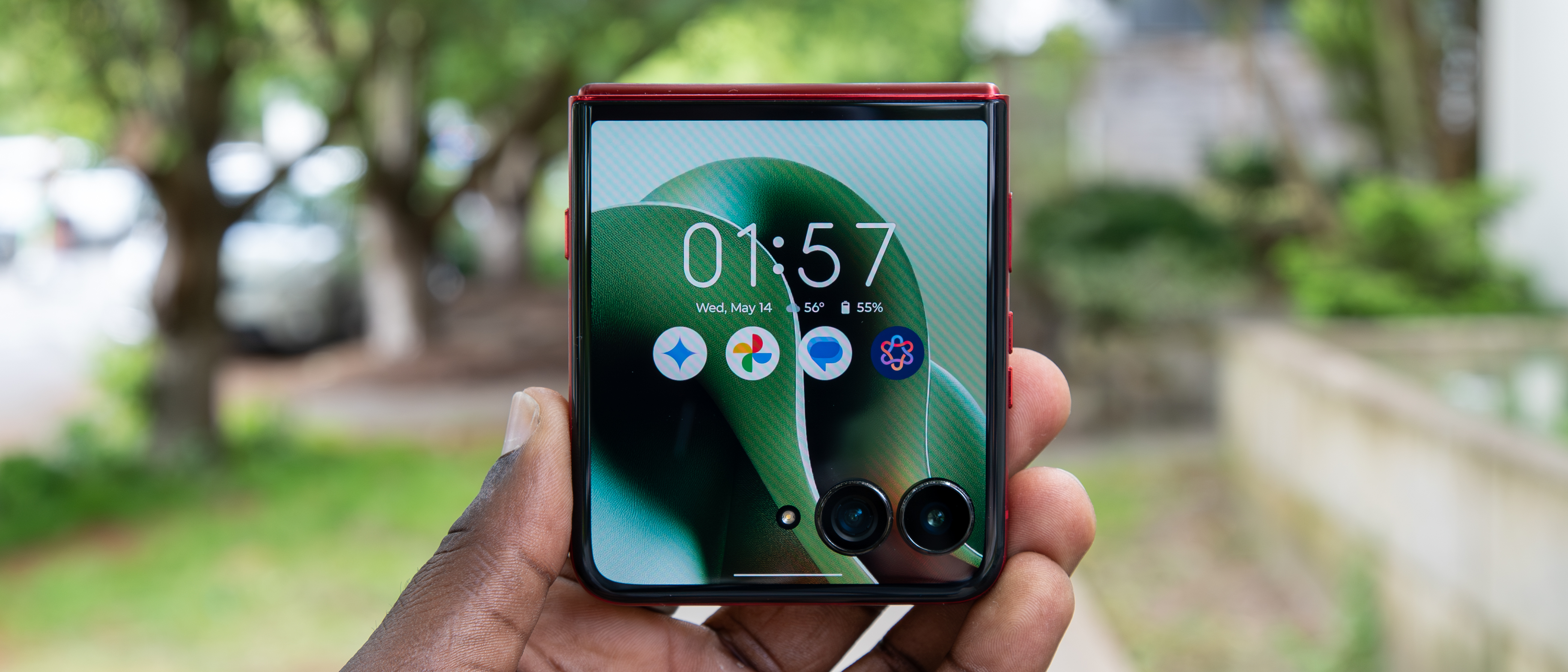Android Central Verdict
With the Razr Ultra 2025, Motorola set out to not only create the best flip phone ever, but arguably one of the best phones of 2025. The Snapdragon 8 Elite and 16GB of RAM provide stellar performance, and improvements to the camera, battery, and charging really take it to another level. Moto AI could use a little tweaking, but it offers a fairly comprehensive suite of features in addition to Google AI/Gemini capabilities. That said, with all this power comes a high price tag, which may understandably turn some consumers away.
Pros
- +
Design improvements with IP48, wood and Alcantara finishes
- +
The titanium-reinforced hinge feels much sturdier
- +
All-day battery and fast charging
- +
Functional cover screen
- +
Some fun and unique AI features
- +
Punchy images and the return of the ultrawide sensor
Cons
- -
Moto AI feels less mature than Samsung and Google offerings
- -
AI Key feels like a wasted opportunity
- -
Software promise falls behind the competition
- -
Expensive
Why you can trust Android Central
To say that the Razr Ultra 2025 took me by surprise is a bit of an understatement. The phone is currently the most powerful flip phone on the market, boasting specs that rival even more traditional premium flagships, such as the Galaxy S25 Ultra. And with a price that matches Samsung’s top-of-the-line model for 2025, Motorola seems to have a lot of confidence in the Razr Ultra 2025 following the line’s success in recent years.
But is Motorola too confident in the Razr Ultra? Does the company have what it takes to charge Samsung-level prices for a phone? I’ve spent a month with the Razr Ultra 2025, and I'm happy to say that Motorola has given us a flip phone that feels so close to perfect, if not for a few quirks.
Motorola always has insanely good deals during the ongoing Cyber Monday shopping season. Don't forget to browse our website if you intend to purchase the Razr Ultra 2025 with heavy discounts. We're covering all the best Cyber Monday deals here at Android Central.
Motorola Razr Ultra 2025: Price and availability
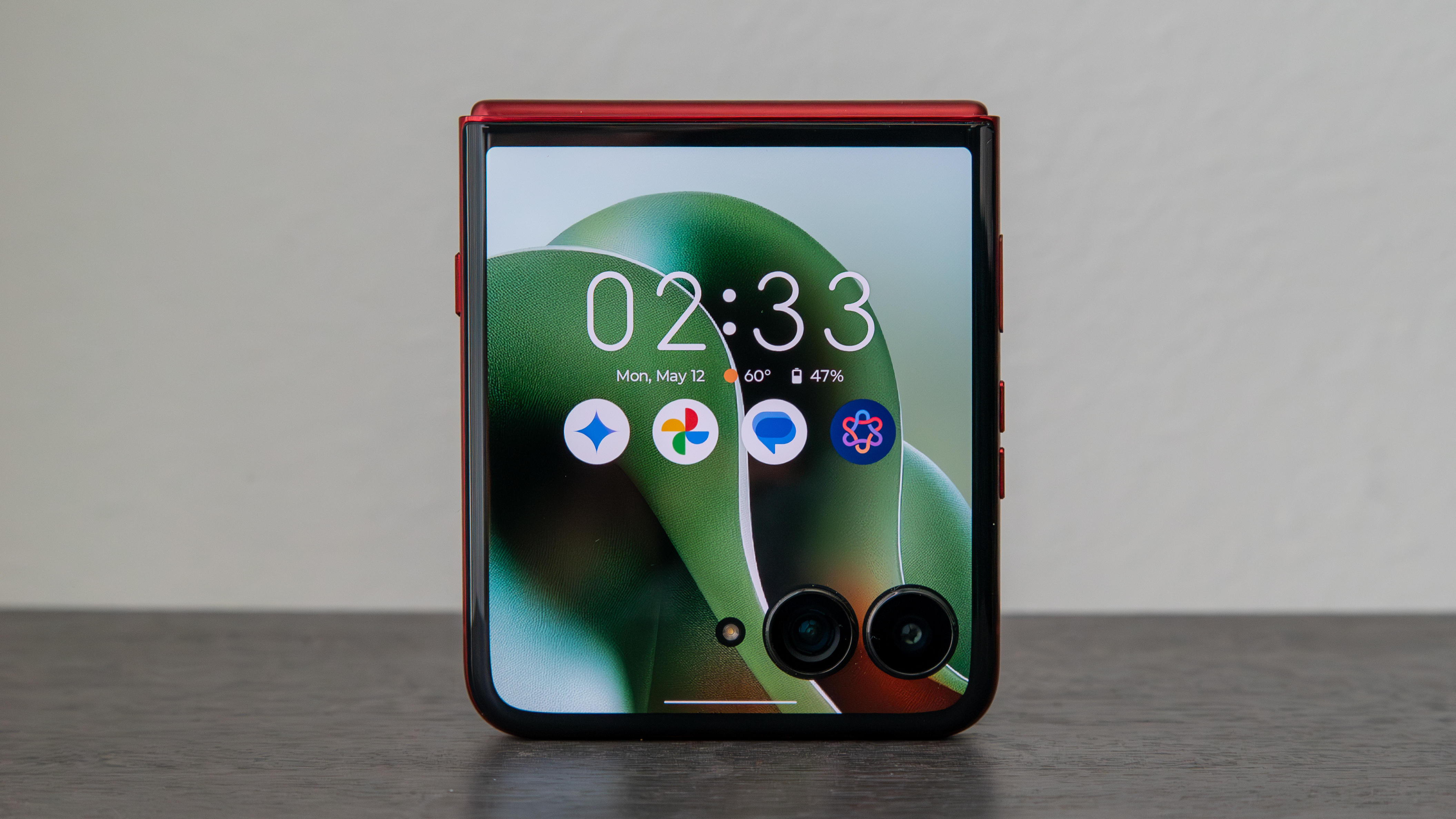
The Motorola Razr Ultra 2025 was announced on April 24 and preorders began on May 7, with open sale starting on May 15 in the United States. Two configurations are available: 16GB+512GB ($1,299) and 16GB+1TB ($1,499, only at Motorola.com).
The phone comes in four different color options, courtesy of Pantone: Scarab (Altandara), Rio Red, Cabaret, and Mountain Trail (wood). Availability will depend on the retailer and carrier.
Motorola Razr Ultra 2025: Specs
Category | Motorola Razr Ultra 2025 |
|---|---|
OS | Android 15 (Hello UX) 3 OS upgrades, 4 years of updates |
Display (internal) | 7-inch, pOLED, 464ppi, Super HD, LTPO 165Hz, HDR10+, 4,500 nits peak brightness |
Display (external) | 4-inch, pOLED, 165Hz, LTPO, 3,000 nits peak brightness |
Chipset | Qualcomm Snapdragon 8 Elite |
RAM | 16GB LPDDR5X |
Storage | 512GB or 1TB, UFS 4.0 |
Rear Camera 1 | 50MP, f/1.8, 1.0μm, 12.6MP Quad Pixel Technology, 2.0μm, Instant all-pixel PDAF, OIS, Pantone Validated Color and Skin Tones |
Rear Camera 2 | 50MP ultrawide, f/2.0, 122° FOV, 0.6μm, 12.6MP Quad Pixel Technology, 1.2μm |
Selfie Camera | 50MP, f/2.0, 0.64μm, 12.6MP, Quad Pixel Technology, 1.28μm |
Audio | 3 mics, dual stereo speakers, Dolby Atmos, Snapdragon Sound |
Connectivity | 5G, Wi-Fi 7, Bluetooth 5.4, NFC, UWB |
Security | Fingerprint sensor, Face unlock |
Protection | IP48, Gorilla Glass Ceramic |
Battery & charging | 4,700mAh 68W wired charging, 30W wireless charging, 5W reverse charging |
Dimensions (open) | 73.99 x 171.48 x 7.19mm |
Dimensions (closed) | 73.99 x 88.12 x 15.69mm |
Weight | 199g |
Colors | Pantone Scarab, Pantone Rio Red, Pantone Mountain Trail, and Pantone Cabaret |
Motorola Razr Ultra 2025: Design and display
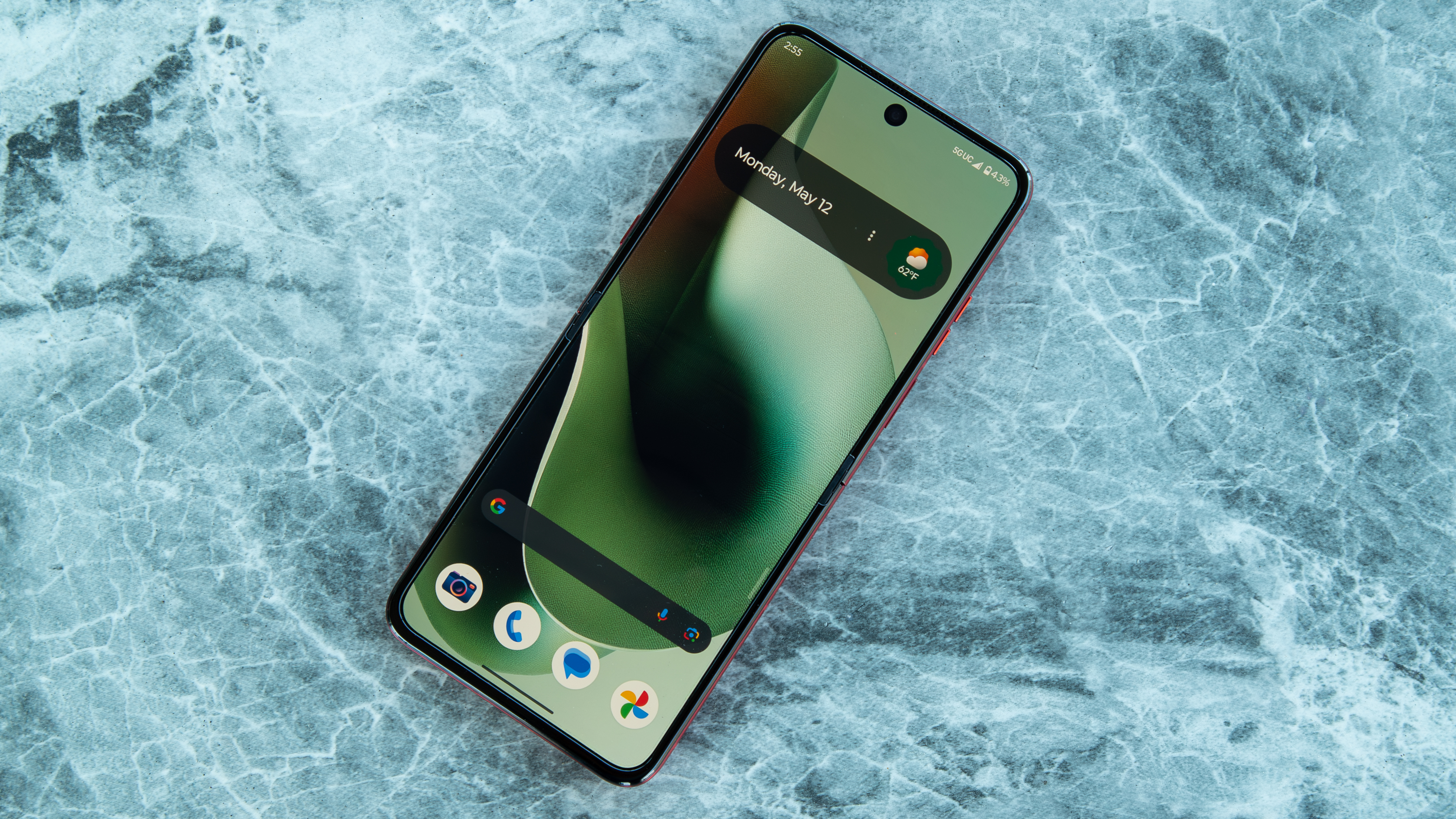
- The Razr Ultra retains Motorola's distinctive styling, featuring vegan leather, Alcantara, and wood finishes.
- The main display is sharper and more vibrant than previous models.
If you’ve followed the Razr series for the past few years, then the design of the Razr Ultra 2025 shouldn’t surprise you. It looks nearly identical to its predecessor, which in this case would be the Razr Plus 2024, sporting the same curved frame, rounded corners, and massive cover panel. The differences lie in the slightly larger display size, the new materials on the back, and the IP48 water and dust resistance for improved durability.
The Razr Ultra 2025 color options are quite interesting this year, as Motorola continues to move away from muted shades. I have the Rio Red color on my unit, which incorporates Motorola’s now-standard vegan leather and is admittedly the least interesting of the Razr Ultra 2025 colors. I previously spent some time with the soft Alcantara and sturdy wood finishes during my hands-on, and I must say, Motorola has given users quite the selection of sensory goodies to choose from.
Get the latest news from Android Central, your trusted companion in the world of Android
I also like that Motorola switched from a glossy frame to brushed metal, as it gives the overall design a rustic sheen.
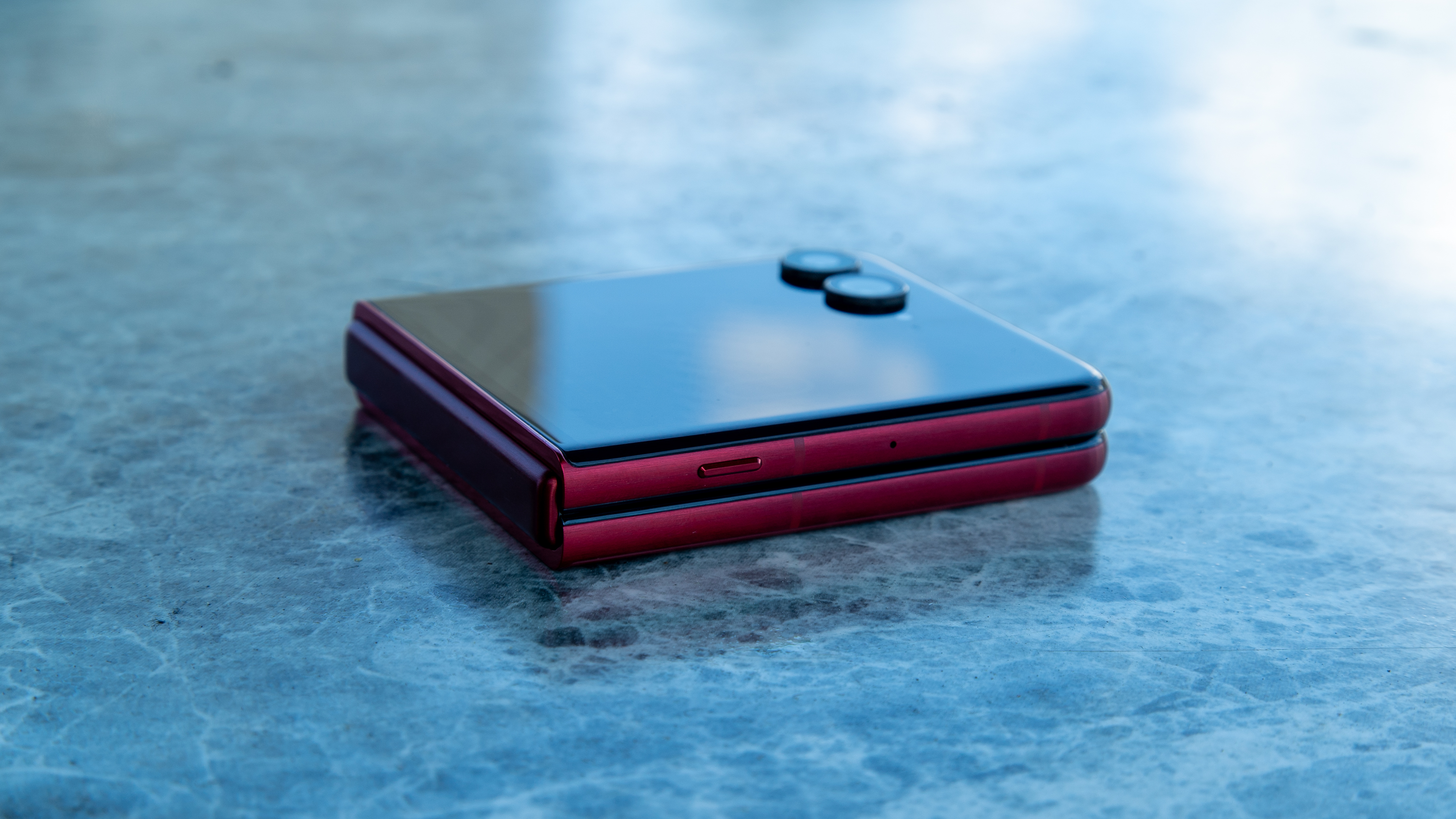
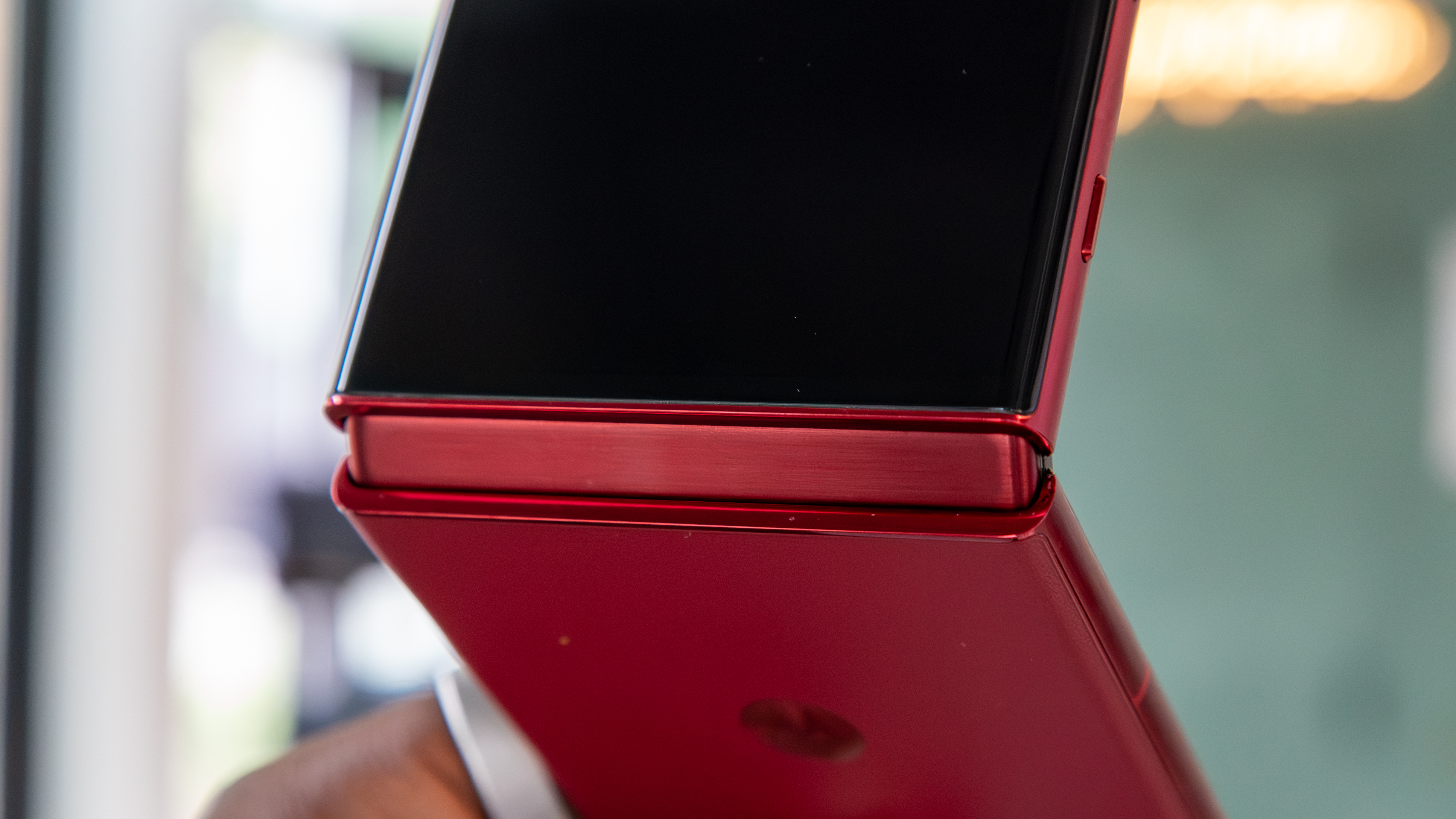
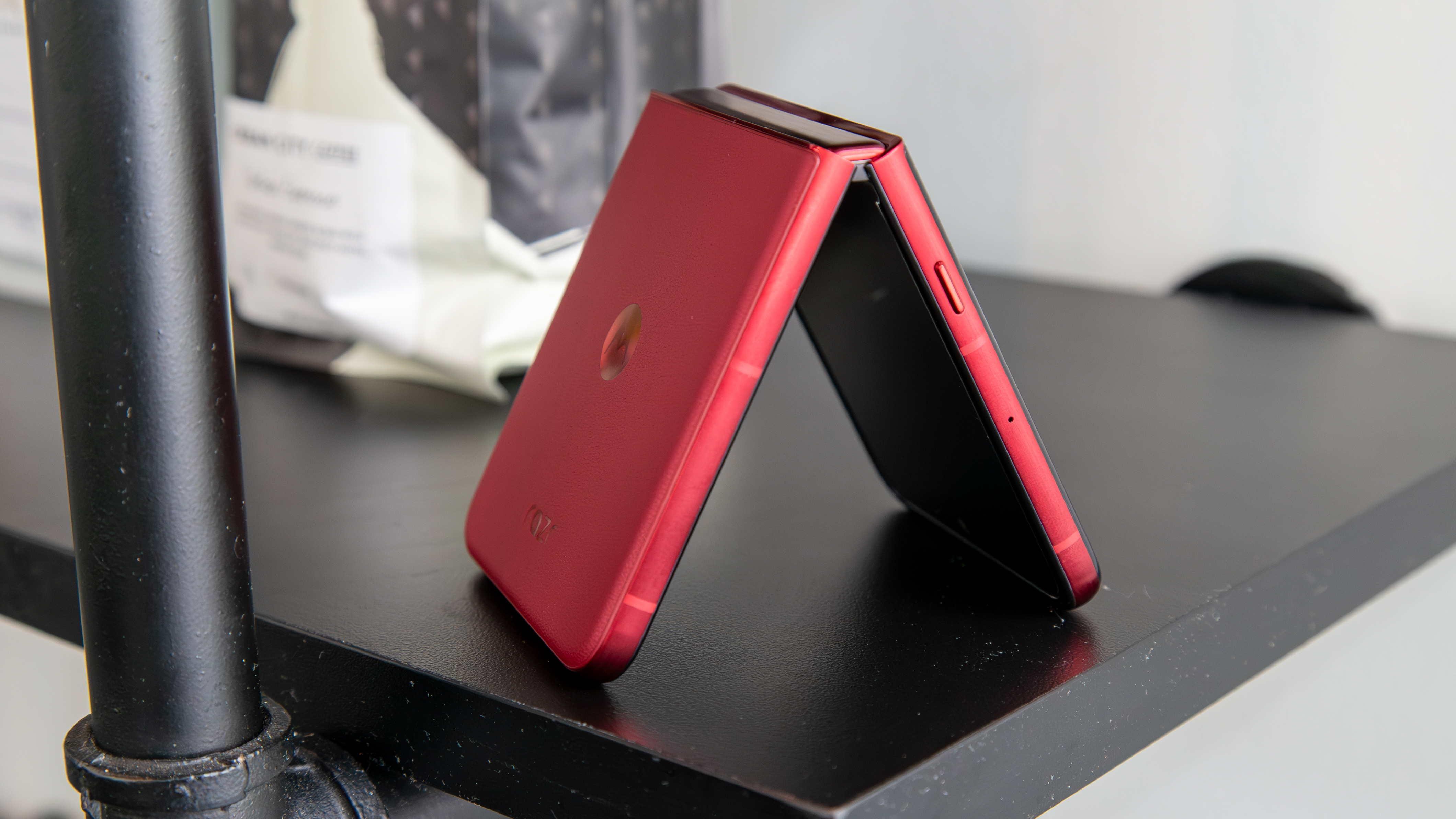
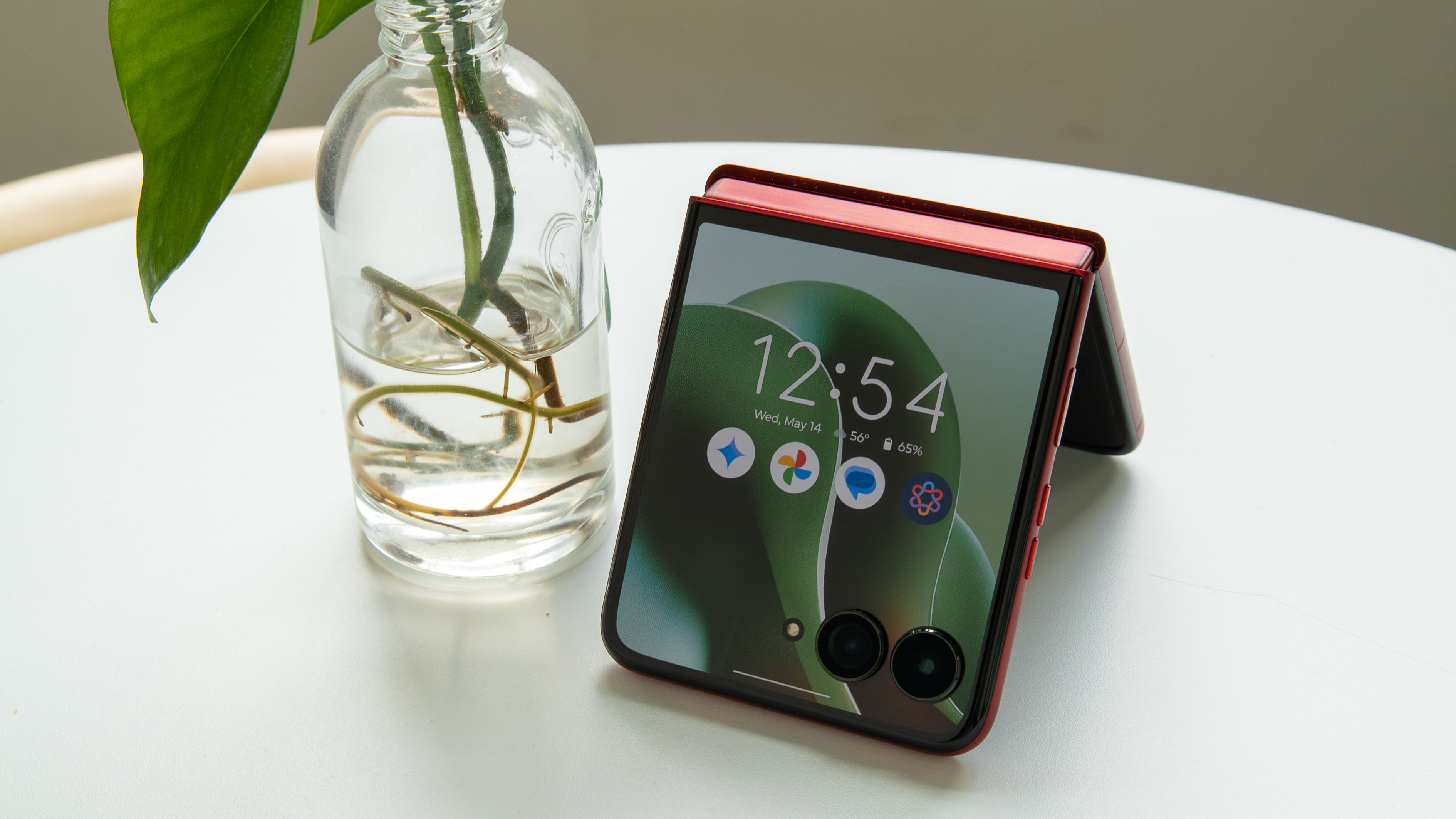
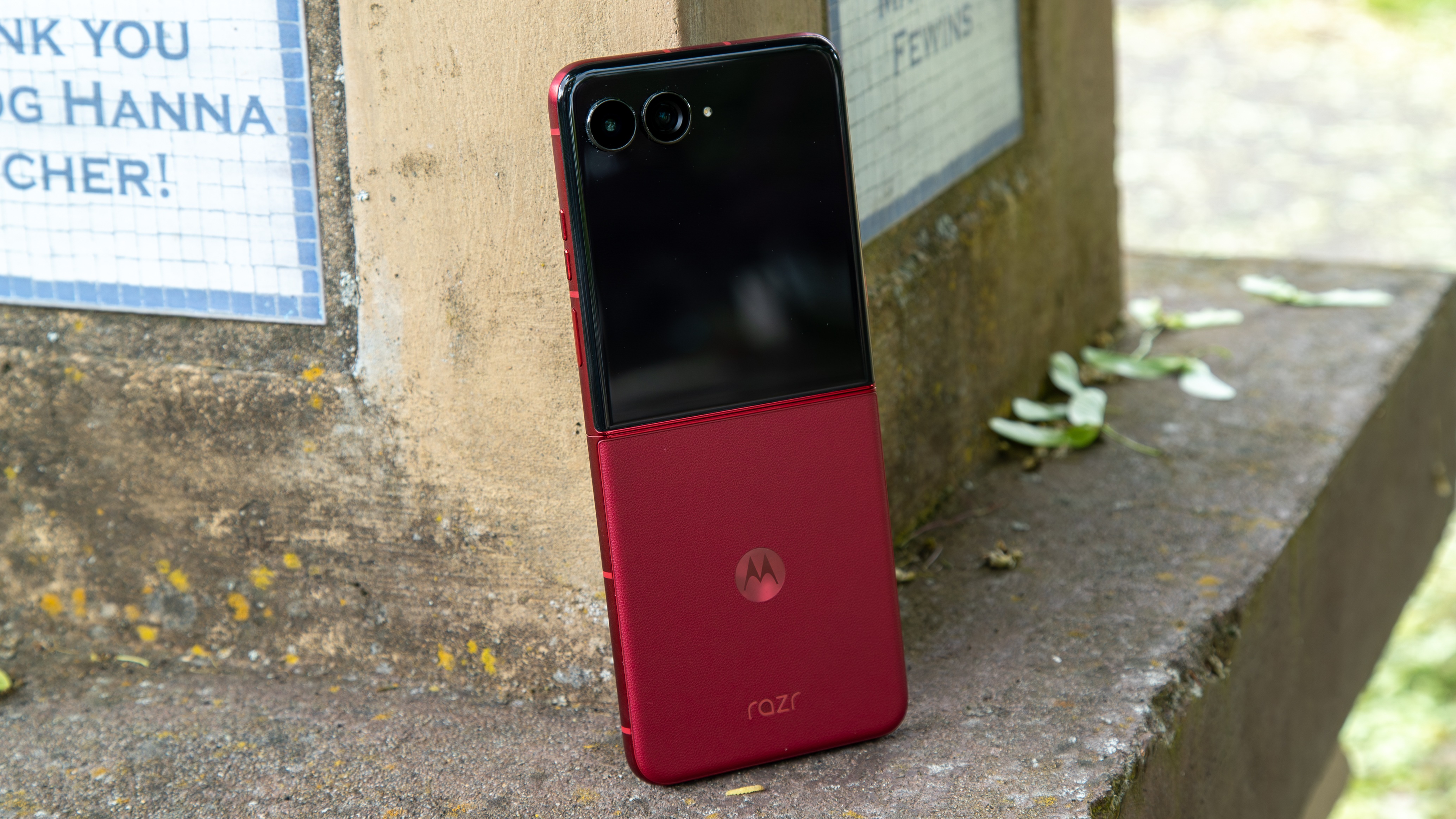
Opening the phone feels great, thanks to the new titanium-reinforced hinge. It’s stronger and makes it easier to open the Razr Ultra with one hand. It almost springs open with a satisfying click, which sounds about as good as it does when closing the phone.
When the phone is open, you’re greeted with a 7-inch OLED display that looks much punchier than previous models. This is likely a result of the Pantone collaboration, which aims to provide "authentic and vivid images." The sharper Super HD resolution also makes content look crisp, while the variable 165Hz refresh rate helps make UI elements move with a slick, buttery smoothness.
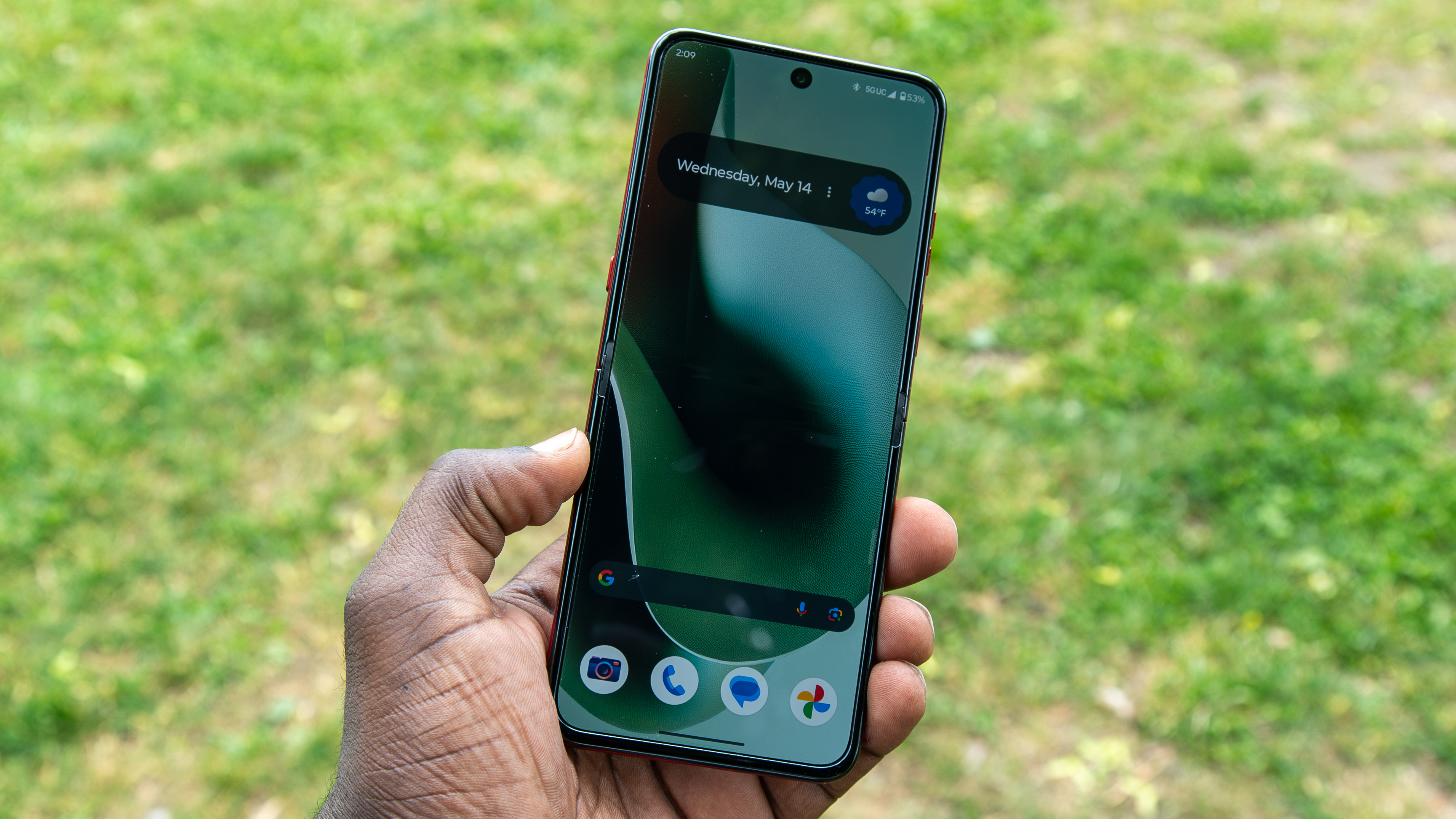
Motorola offers three display presets for controlling color display: Natural, Radiant, and Vivid. I would suggest Radiant, as it splits the diff and gives you a bit more vibrancy without overdoing it. There are also a few settings for eye protection, including Flicker prevention for users with PWM sensitivity, which is nice to see as Motorola continues improving the overall quality of its displays.
Motorola Razr Ultra 2025: Performance
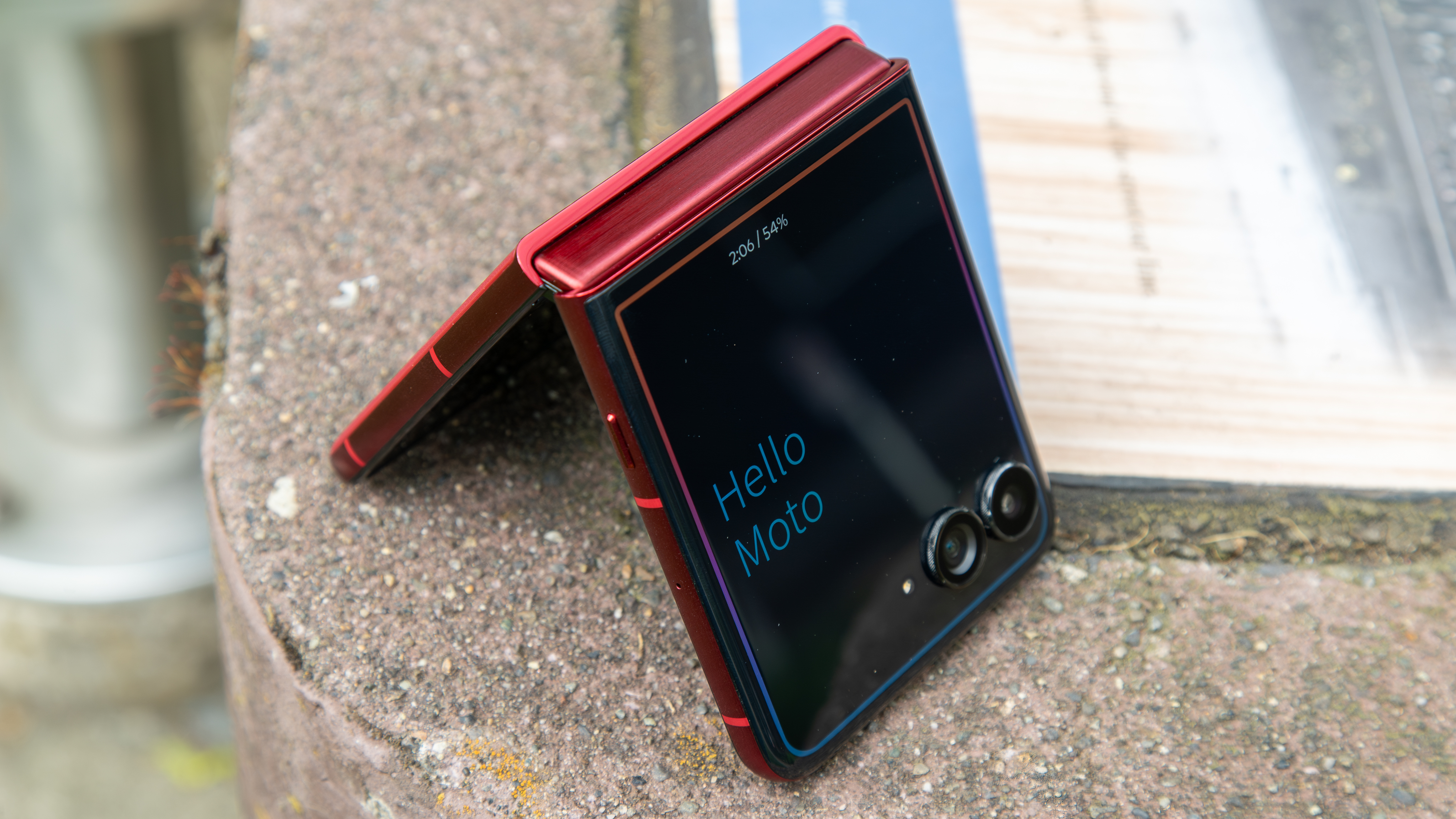
- The Snapdragon 8 Elite, paired with 16GB of RAM, delivers exceptional everyday performance.
- Games feel speedy, and I haven't noticed any lag or slowdowns in graphically intensive titles.
- Geekbench 6 scores fall behind other 8 Elite phones, likely due to thermal management measures.
The Razr Ultra 2025 is powered by the Snapdragon 8 Elite, making it the first flip phone to feature this chipset. Coupled with 16GB of RAM, it theoretically surpasses other flagships, at least on paper. It may seem like overkill, and it probably is, but the result is the kind of performance you’d expect from a top-tier flagship phone, as I experienced no lag or hiccups in my use.
Unfortunately, the Geekbench 6 scores don't really reflect this. It scores lower than last year's Galaxy Z Flip 6 and Razr Plus 2024 in single-core tests, although it performs significantly better in multi-core tests. My guess is that Motorola may have adjusted the clock speed of the prime cores to help with thermal management, as flip phones tend to get quite warm in the top half when overworked.
| Header Cell - Column 0 | Processor | Single-core score | Multi-core score |
|---|---|---|---|
Motorola Razr Ultra 2025 | Qualcomm Snapdragon 8 Elite | 1,742 | 6,695 |
Samsung Galaxy Z Flip 6 | Qualcomm Snapdragon 8 Gen 3 for Galaxy | 1,921 | 5,980 |
Motorola Razr 2025 | MediaTek Dimensity 7400X | 1,030 | 2,890 |
Motorola Razr Plus 2024 | Qualcomm Snapdragon 8s Gen 3 | 1,836 | 4,339 |
Motorola Razr 2024 | MediaTek Dimensity 7300X | 1,036 | 2,975 |
I don't put much stock in benchmark tests, and my real-world use of the phone has proven to be quite exceptional. That said, if you do care, then it's certainly something to consider.
Motorola Razr Ultra 2025: Battery & charging
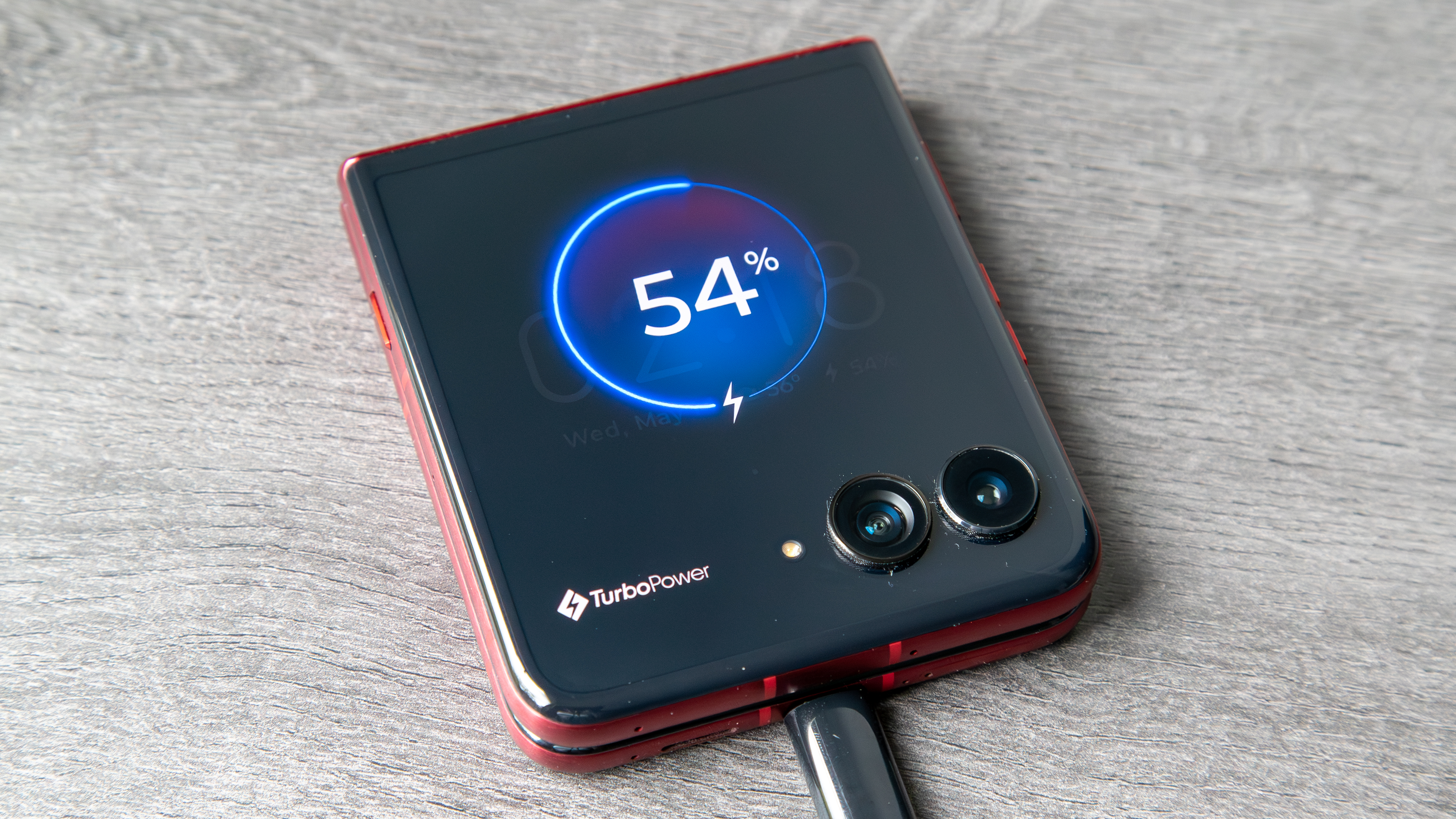
- The phone has a larger battery with all-day battery life.
- A full charge from 1% takes roughly 40 minutes with a fast-enough charger.
The rather large 4,700mAh battery should help offset the more powerful chipset and higher-resolution display. So far, I have no complaints about battery life, and the phone can easily get me through the day, although I haven't managed to get much more than that and will usually have to top up while I sleep.
Fortunately, power users will appreciate the 68W charging, which fully charges the phone in approximately 40 minutes. Although I haven’t been able to test out the top 30W wireless charging speed, as all of my chargers top out at 15W, it’s good to see a company in the U.S. moving the needle on charging speeds, aside from OnePlus.
Motorola Razr Ultra 2025: Software and AI

- The software promise is good, but it falls behind competitors.
- Moto AI feels like a fairly solid offering, although not as robust as those from Google or Samsung.
- The AI Key is a missed opportunity.
The Razr Ultra 2025 runs Android 15 and will receive three OS upgrades and four years of security updates, which notably falls behind other flagship competitors. The latest version of Hello UX isn’t significantly different from Motorola’s Android 14 software, although it incorporates several Motorola or Razr-specific features throughout.
Motorola has packed as much AI as possible into its Moto AI software, which, after some feedback from early testers, feels significantly better than last year's beta, with more easily accessible features that can be found in the dedicated Moto AI app.
For example, notification summaries are available with the click of a button and are now actionable, and thanks to Perplexity integration, Moto AI will pull up contextual actions based on whatever’s on your screen when you trigger it, similar in a way to Gemini.
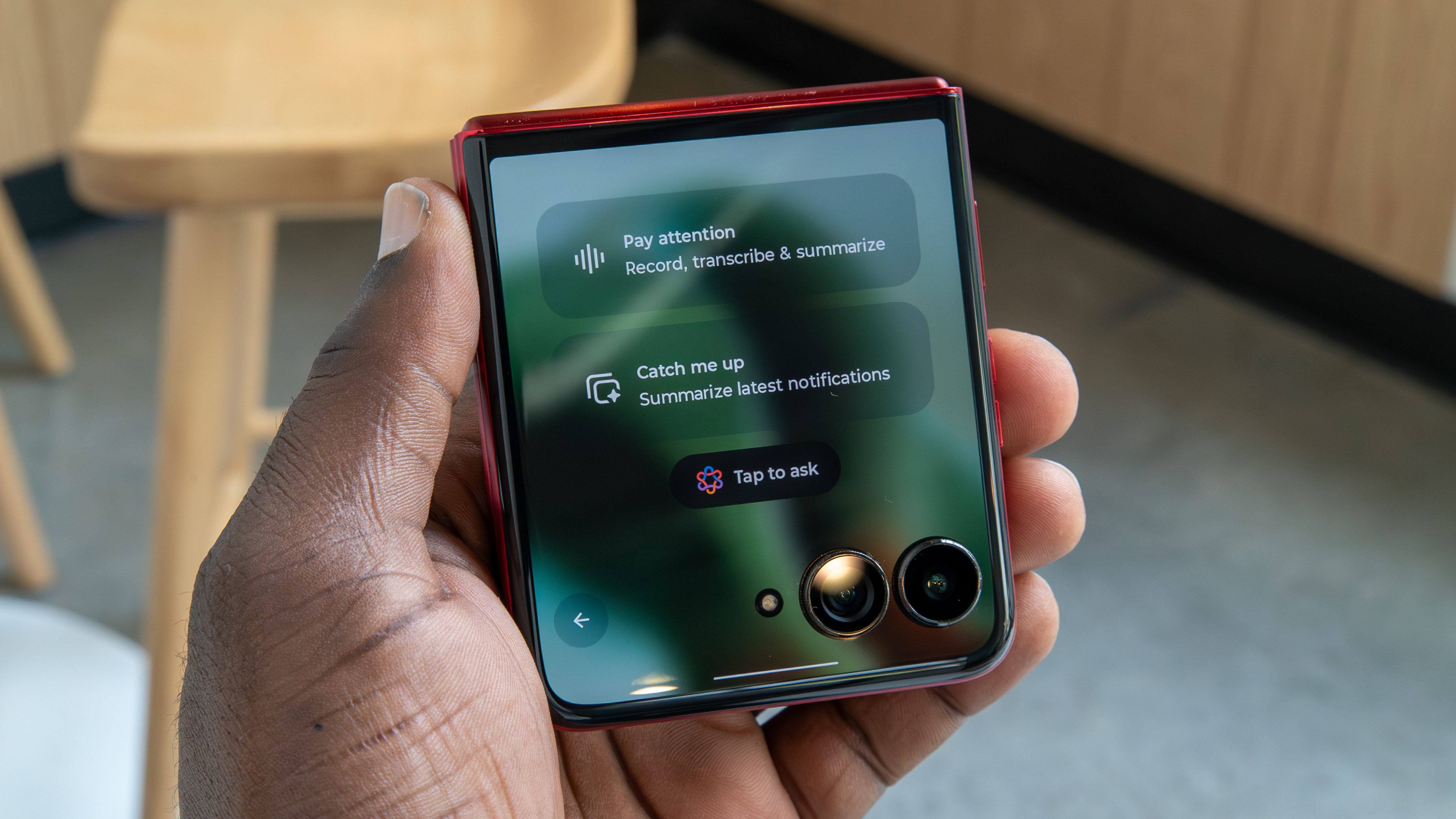
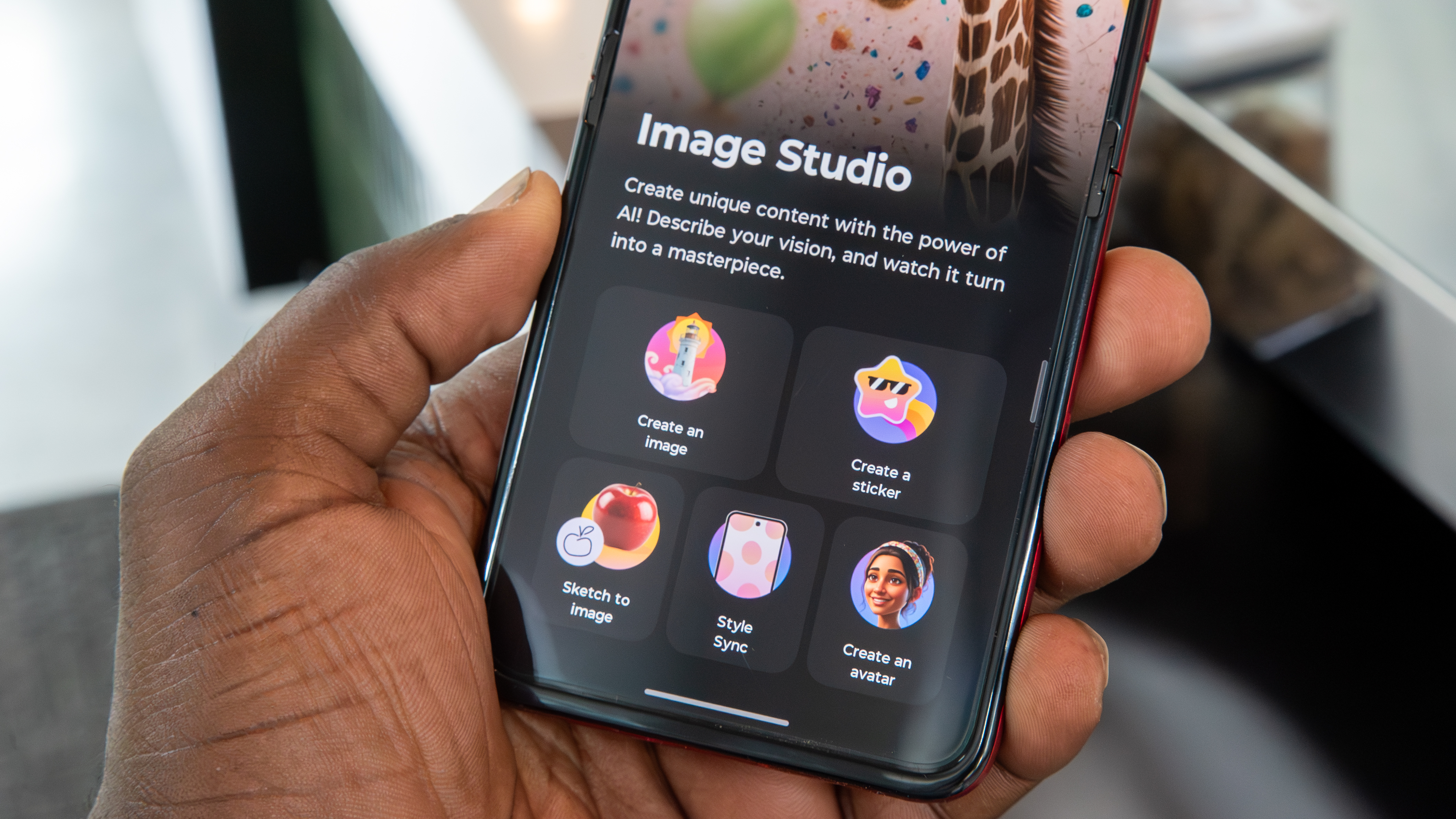
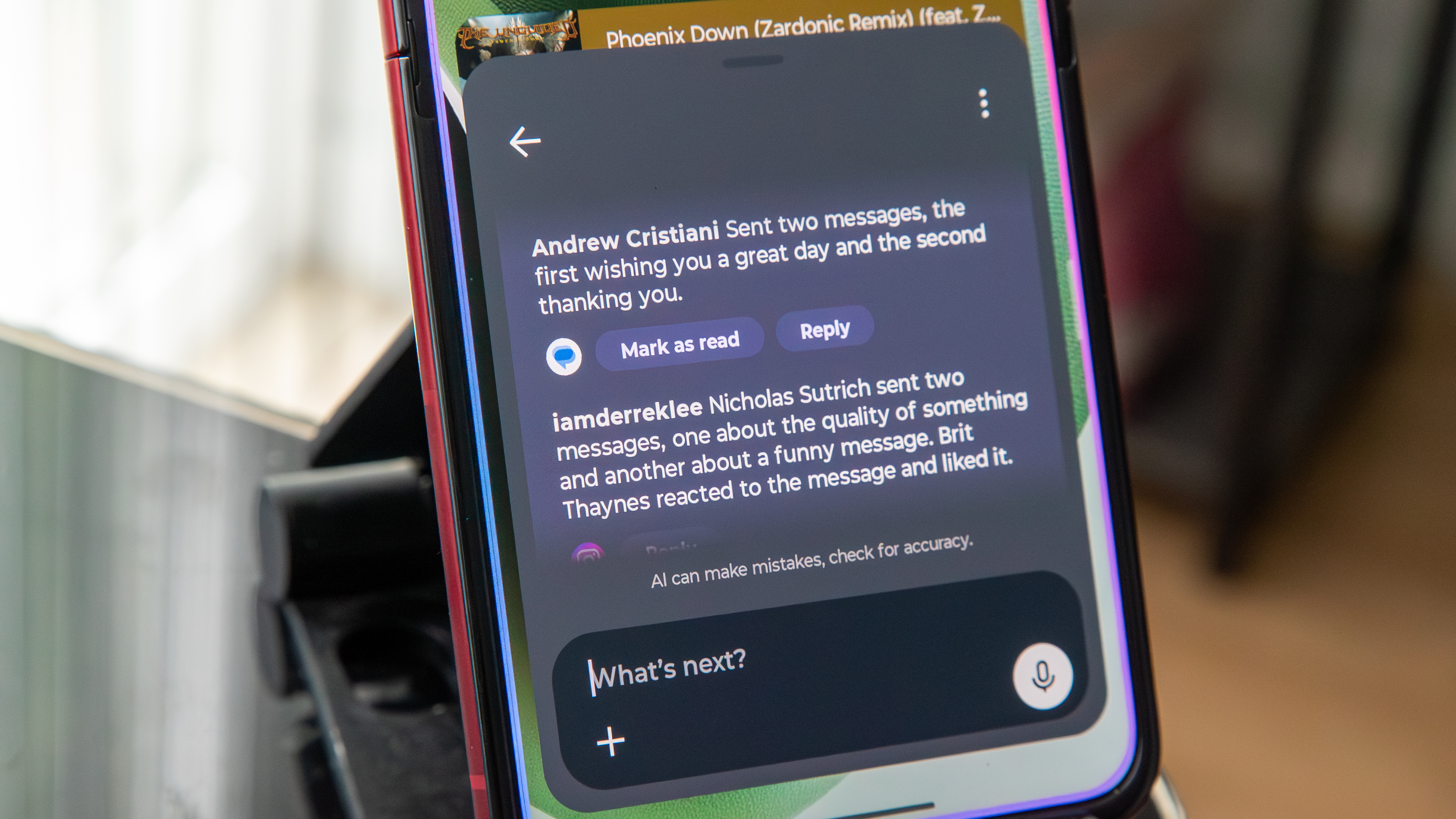
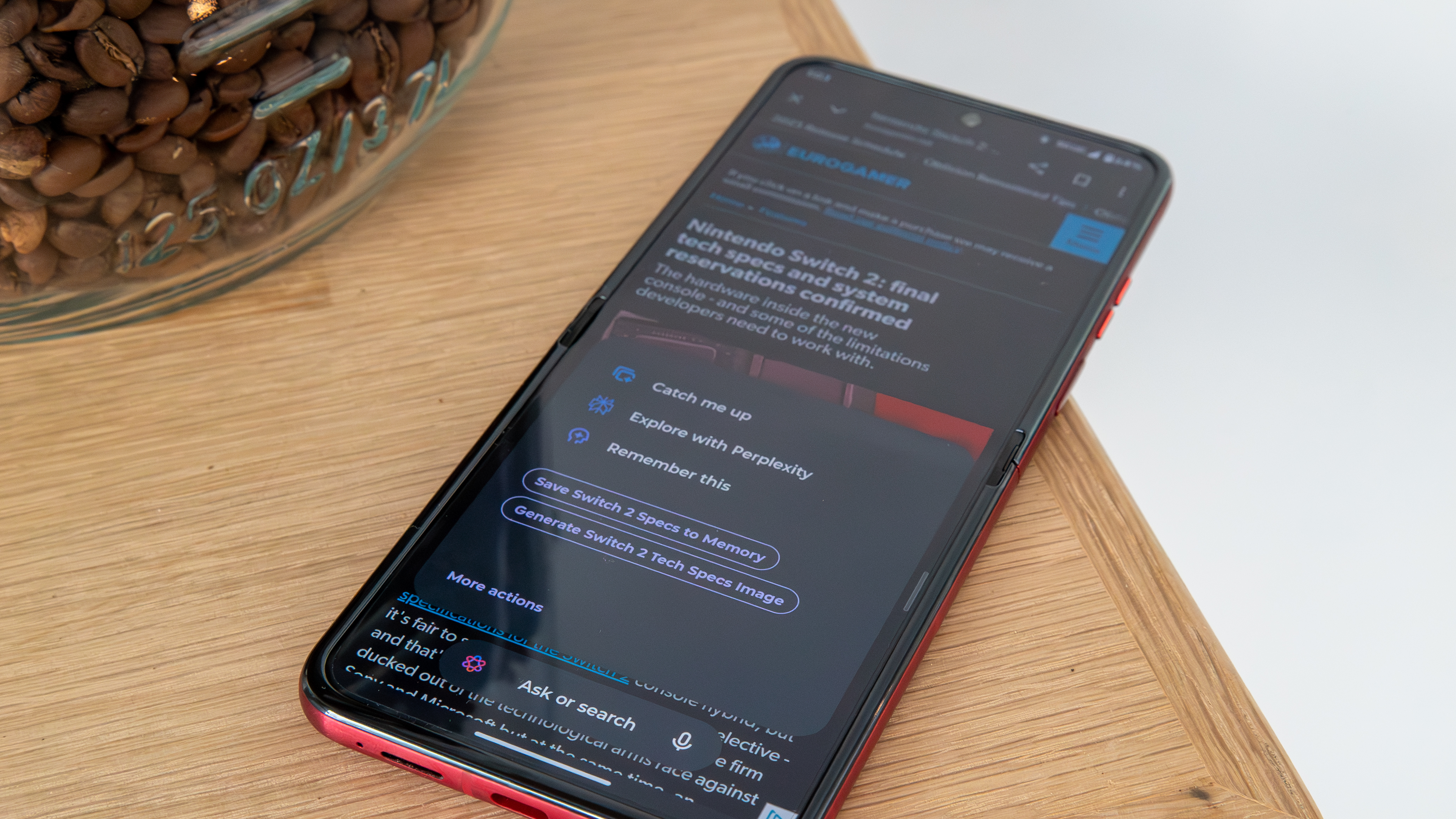
Image Studio and Playlist Studio are fun ways to utilize AI to generate images and context-based music playlists (a feature that YouTube Music should consider adopting), although the latter is currently limited to Amazon Music, which I imagine won't be of much benefit to many people.
The Razr still features Gemini and some Google AI features to complement Moto AI. And unlike Galaxy AI, Moto AI isn’t injected into every aspect of the OS, which some may find refreshing. That said, there are several ways to trigger it, including the new dedicated AI button and double-tapping the back of the phone.
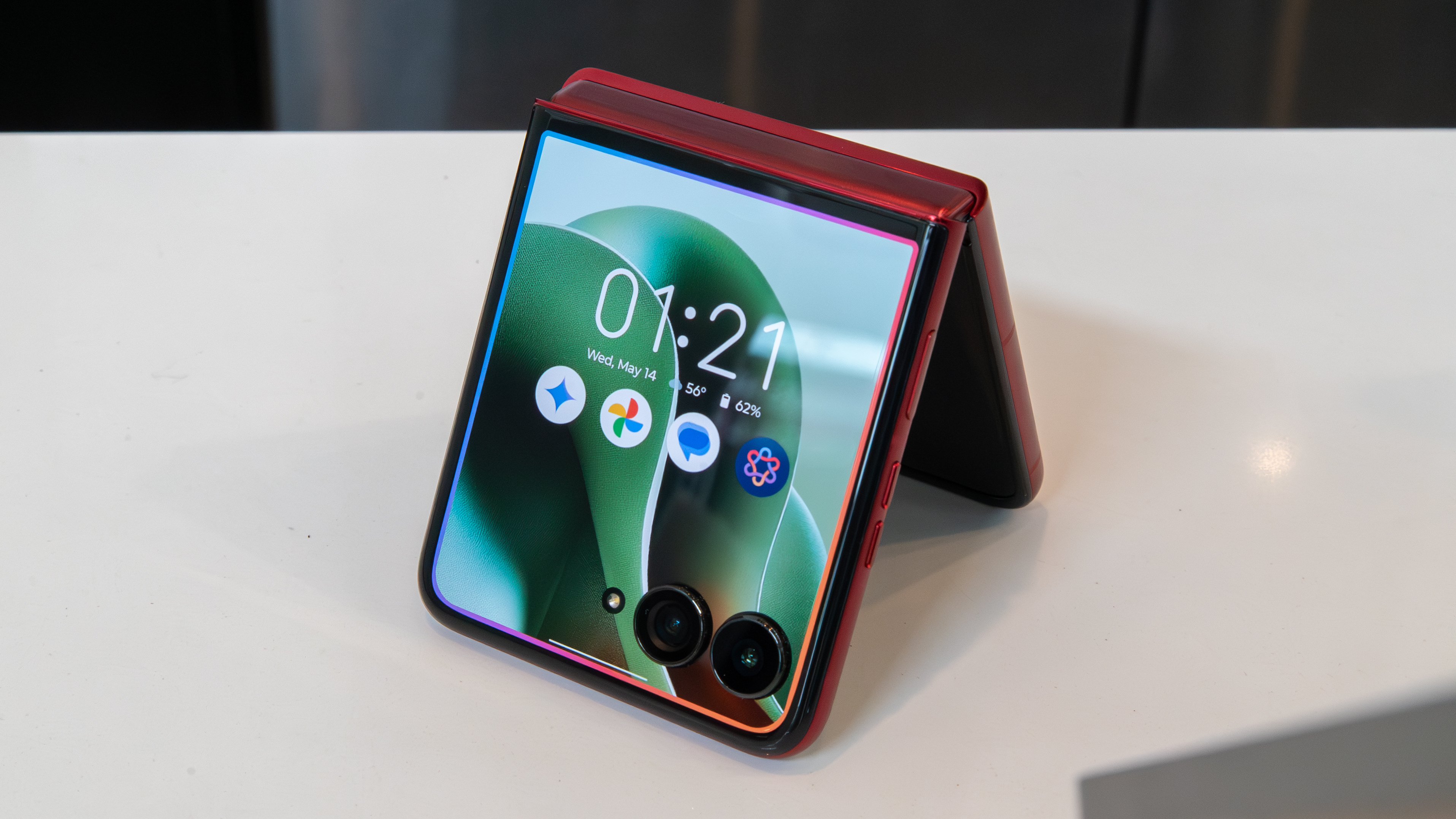

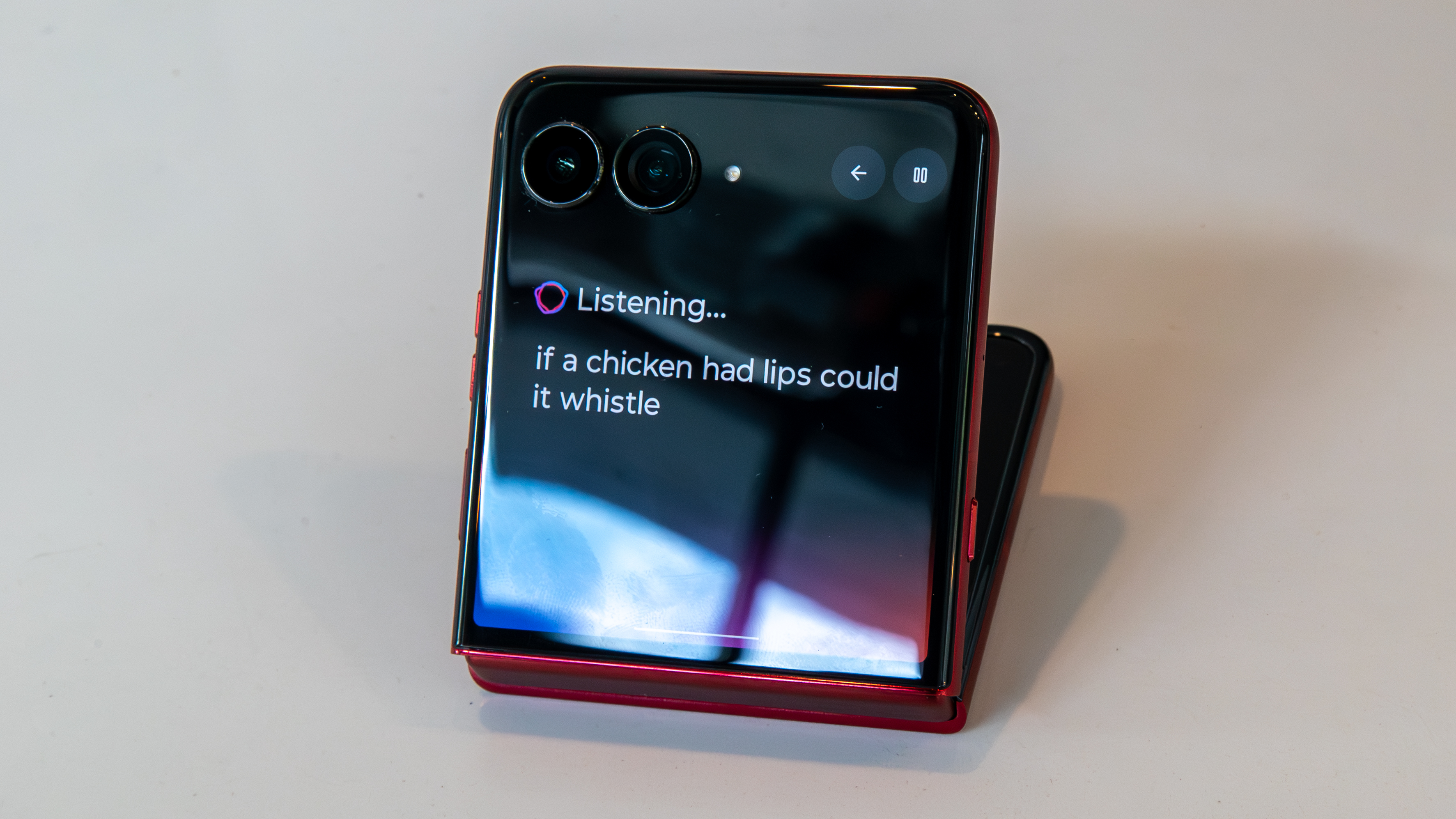
One of the coolest features is Look & Talk, which triggers Moto AI by simply looking at the Razr while in Tent or Stand mode. You can immediately start talking to it and ask follow-up questions, although you’ll have to wait until it’s done speaking or press the mic icon to interrupt it. It’s not as seamless as Gemini Live, which allows you to interrupt it mid-sentence, and I hope Motorola will enable this feature in future updates.

Aside from Look & Talk, triggering Moto AI regularly doesn't immediately let you talk to it, which feels like a missed opportunity. You have to tap the mic icon, which adds an unnecessary extra step to the process. Moto AI also isn't as fast as Gemini when answering questions, which can be a little frustrating in an age when consumers expect immediate information.
The AI Key is also a missed opportunity, as it feels severely limited when compared to other implementations of AI buttons. Hopefully, Motorola will allow more customization here, because it could become a very useful hardware feature.
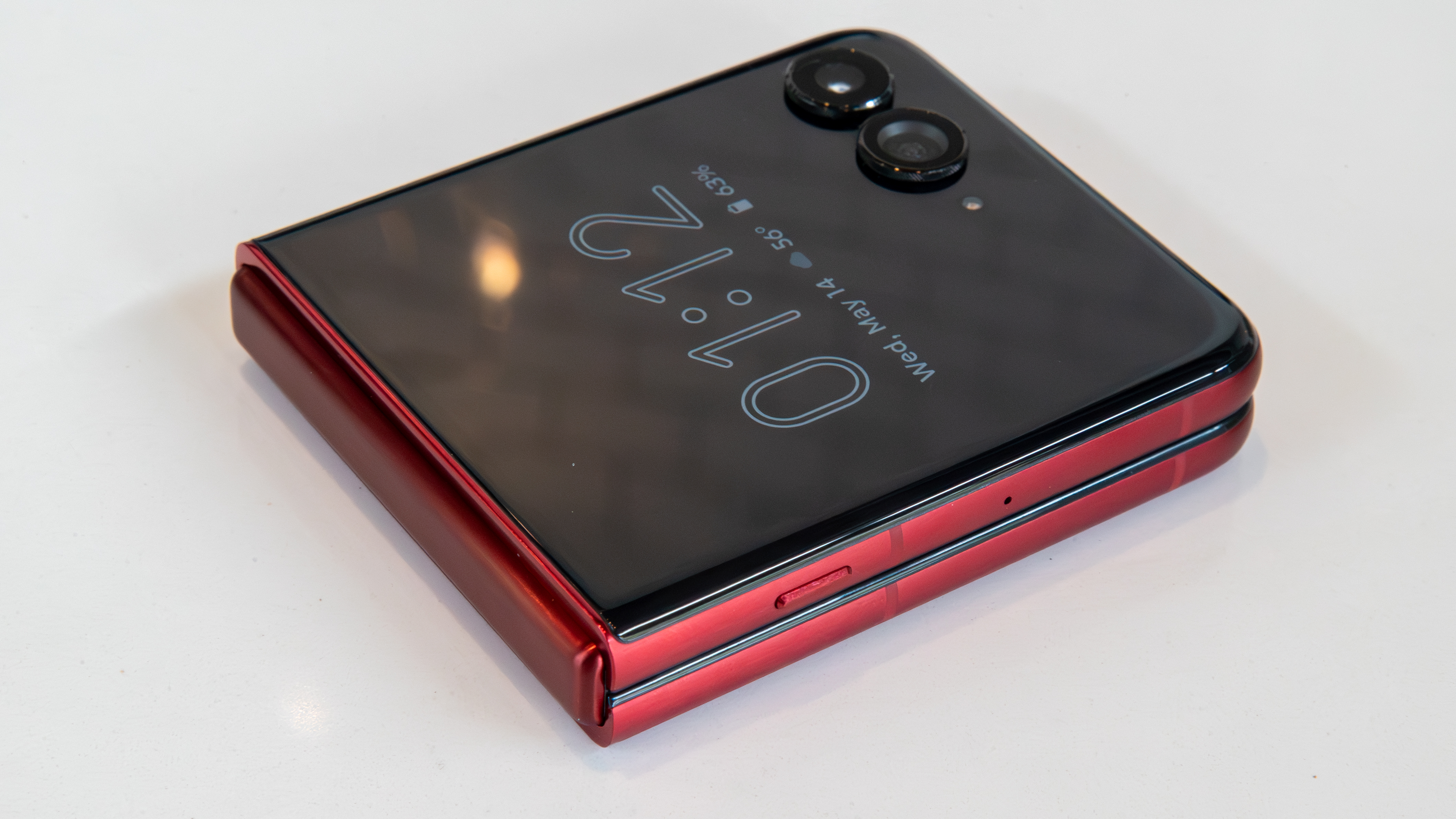
Overall, I think Motorola's overall AI execution could use some work. While we can "explore" topics further with the Perplexity integration, I would like to see this type of visibility extended to other AI models that consumers are likely more familiar with, such as Copilot, Meta AI, or Gemini.
Fortunately, if Moto AI isn't for you, it's easy enough to ignore it and stick to using Gemini, which is my go-to.
Motorola Razr Ultra 2025: Cover screen
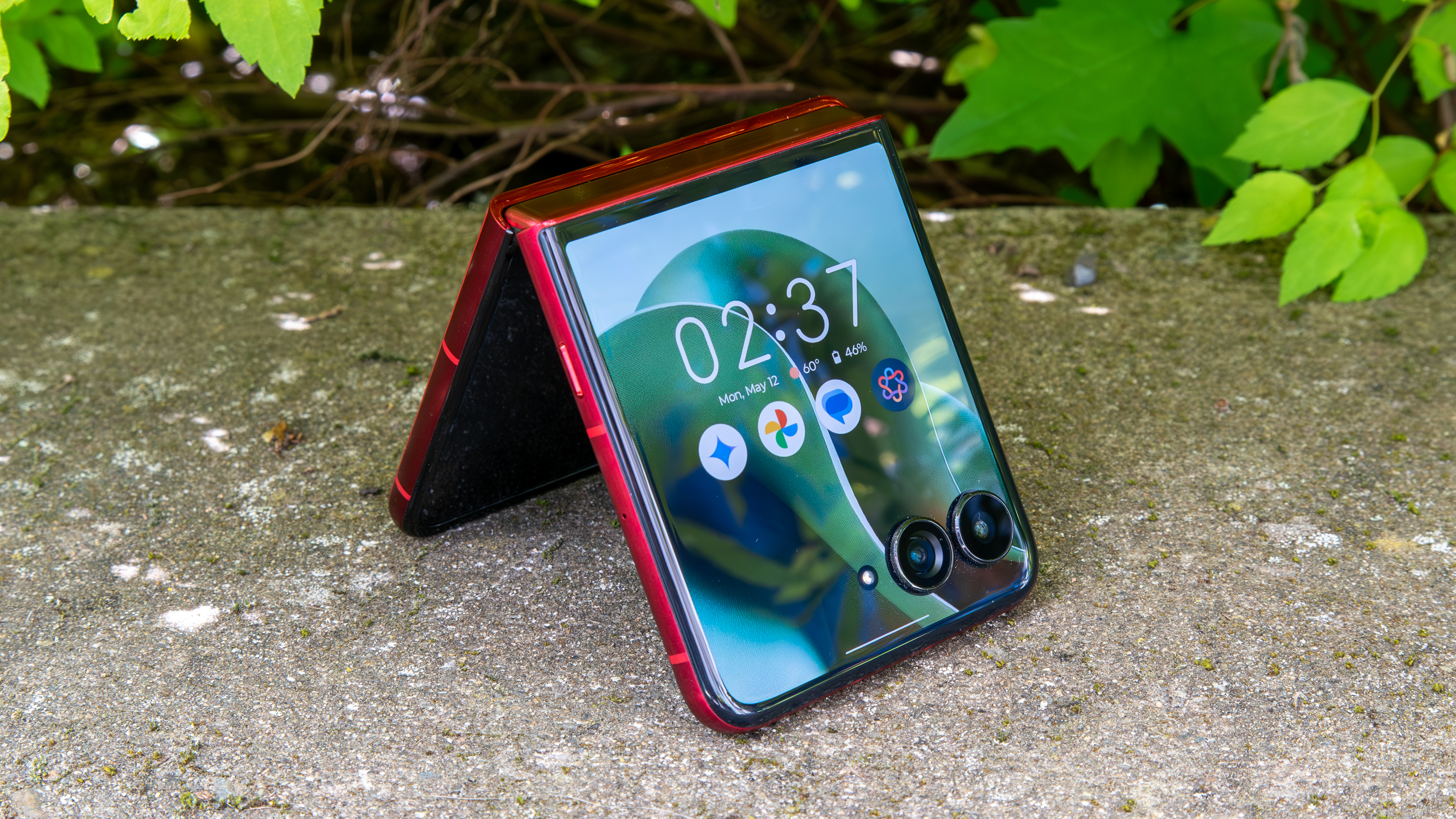
- Cover screen remains just as functional as ever, if not more.
- Users can now set app shortcuts and more app and widget panels.
The cover screen experience hasn’t changed much from the Razr Plus 2024, which is great. In fact, it got better with Android 15. Not only can you natively use apps on the cover screen, but you can also long-press apps for additional actions, and now even set shortcuts to certain app functions on the app panel for even faster access to things without opening the phone.
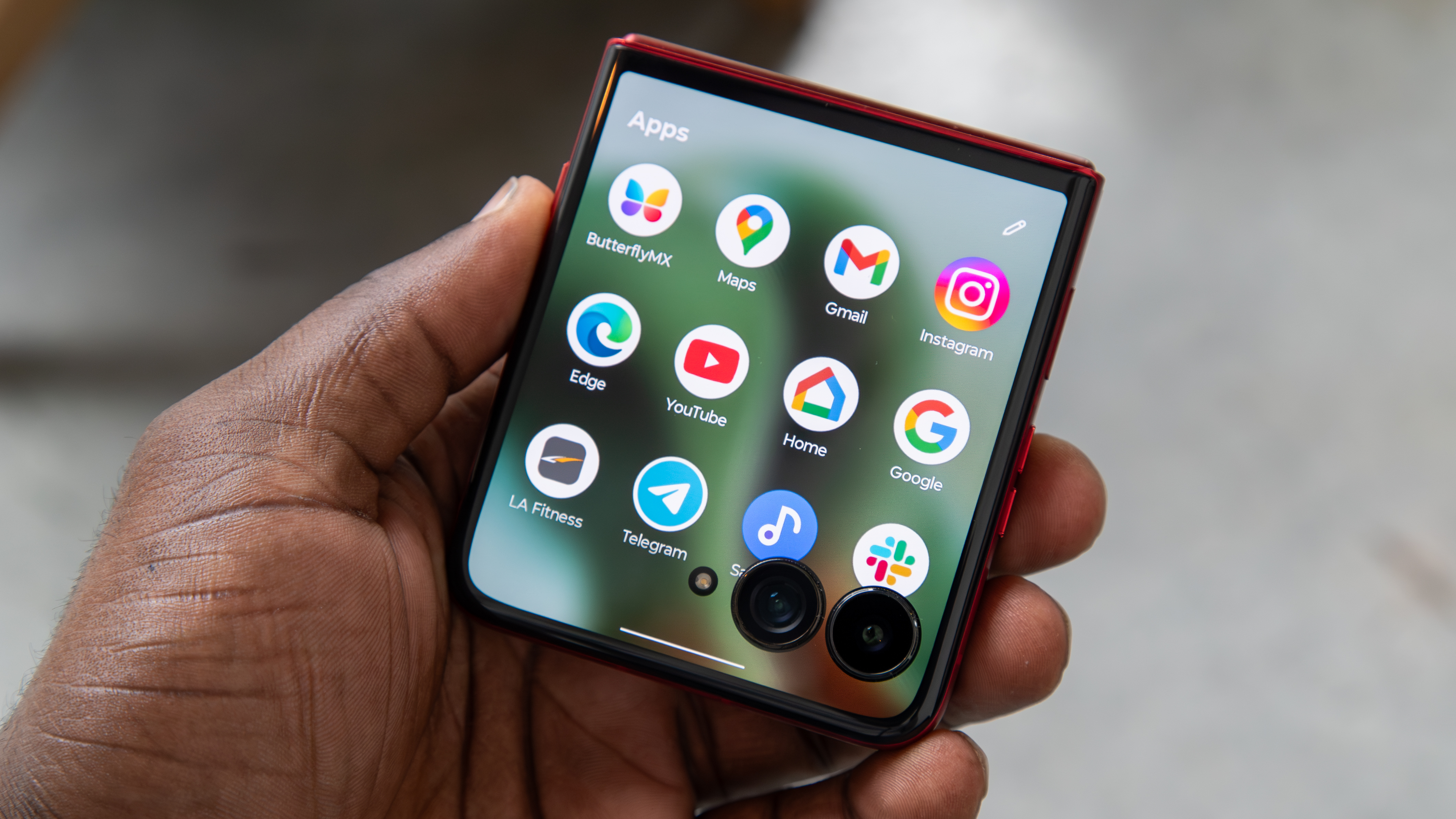
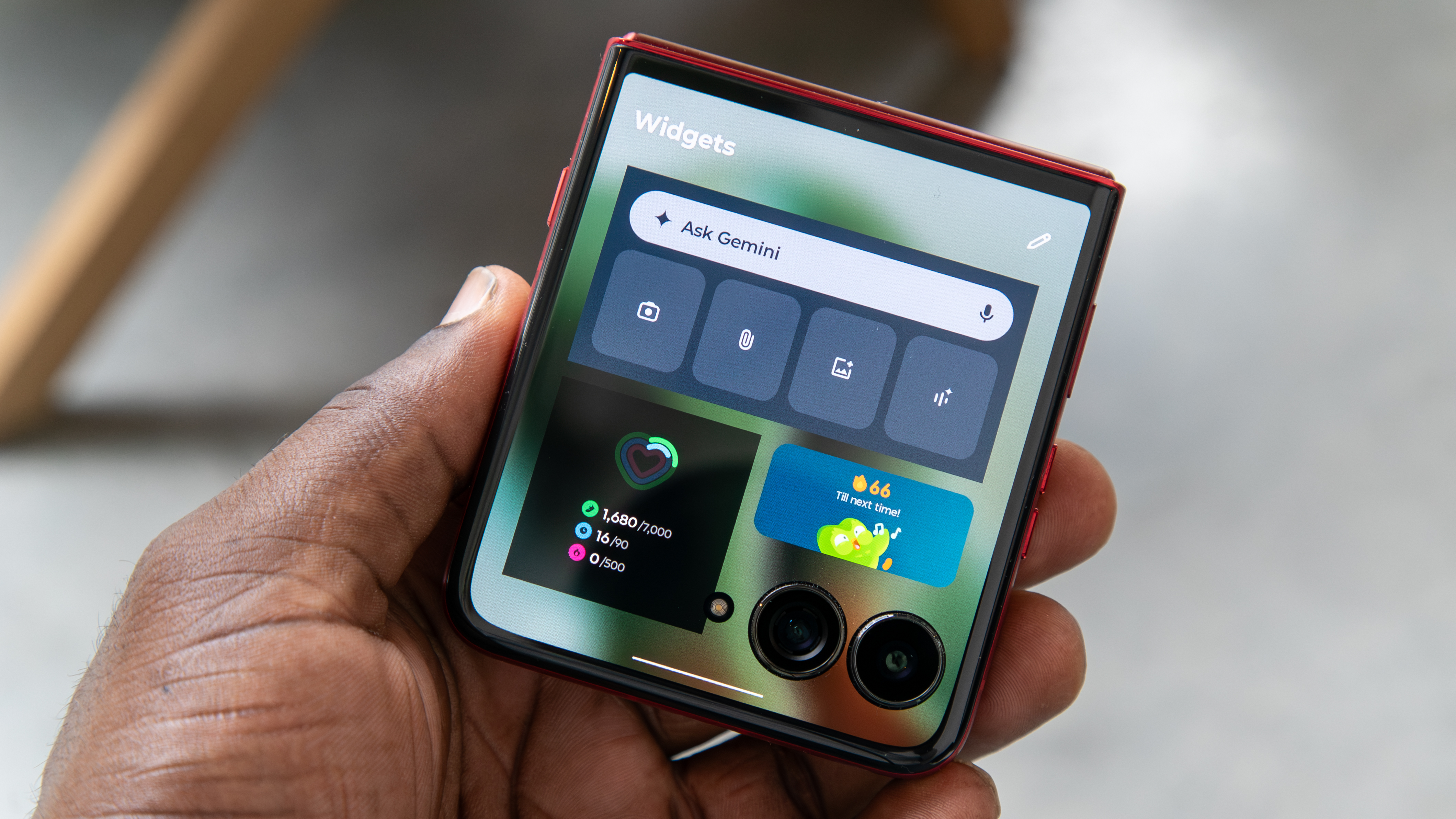

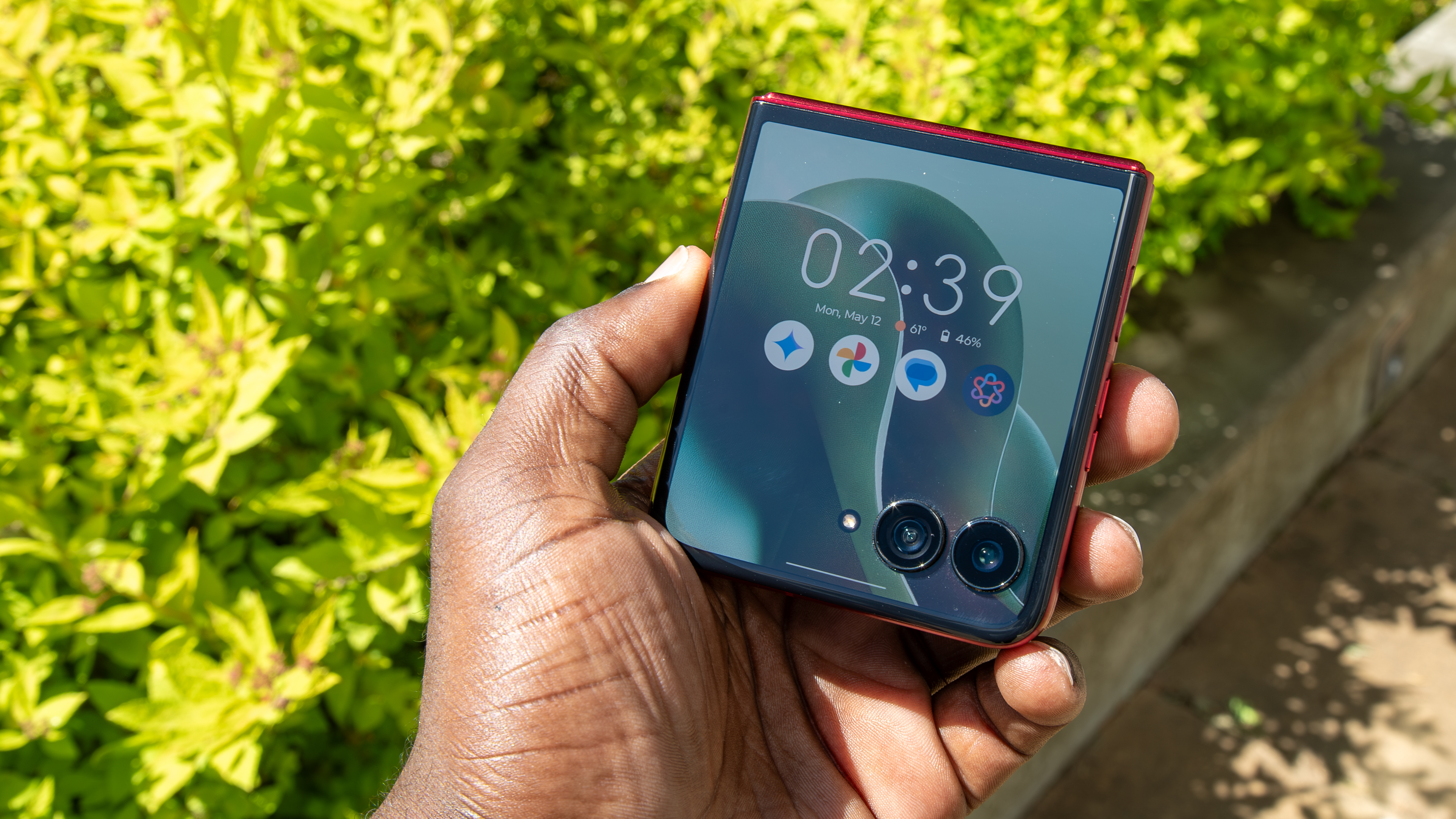
Furthermore, you can enable multiple app and widget panels, which can come in handy if you want separate app pages instead of scrolling through a single panel. That said, the overall functionality of using apps on the cover screen remains the same and is still one of my favorite ways to use the Razr.
Motorola Razr Ultra 2025: Cameras
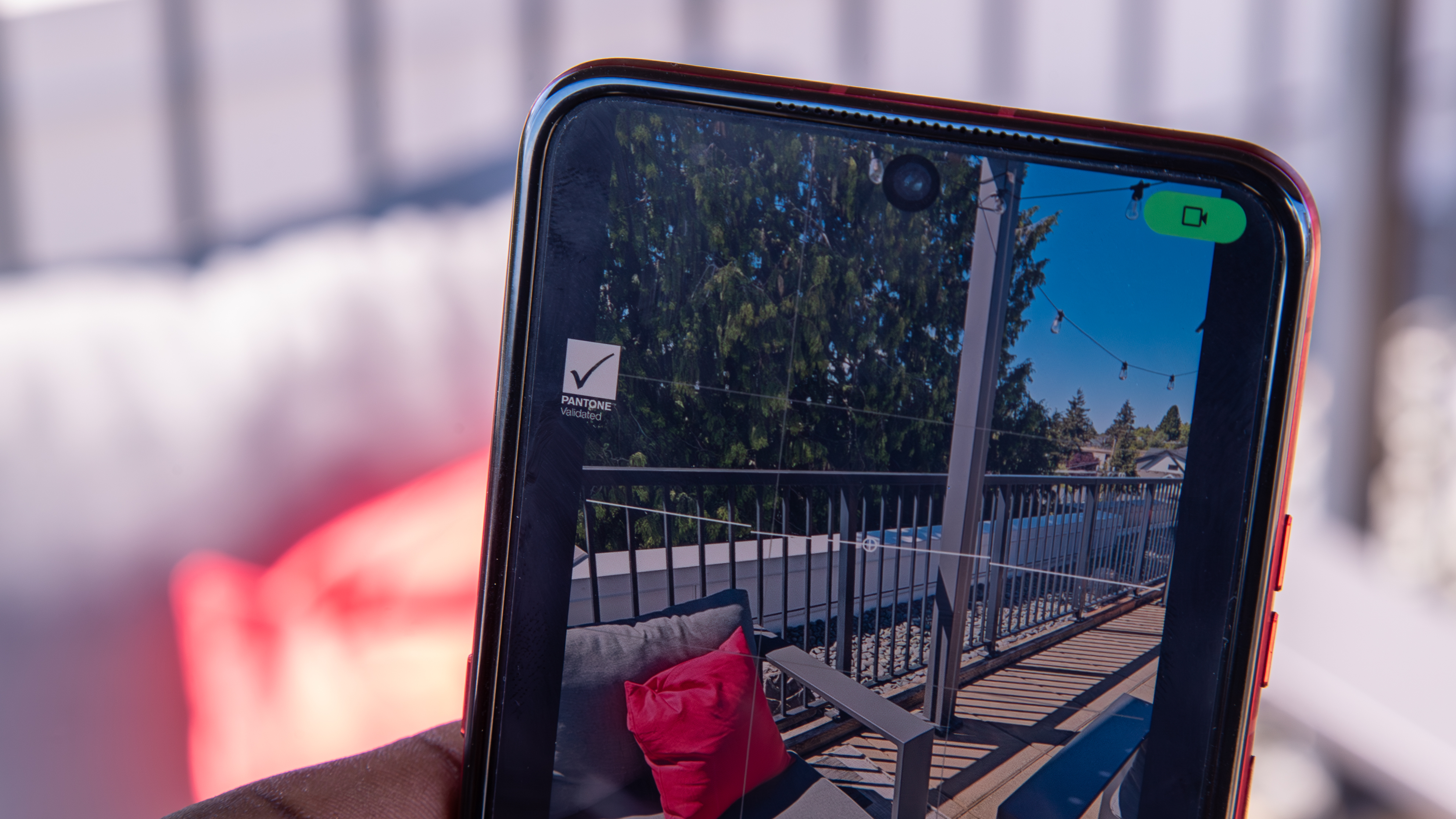
- Images are punchy and detailed, with decent low-light performance.
- AI lets you take photos of fast-moving objects, capture better group shots, and set customized color profiles.
- Video capture is improved with up to 8K30 recording.
Lo and behold, the Razr Ultra 2025 takes great photos from the primary sensor, even at 2x zoom. The colors feel much punchier than I’m used to seeing from Motorola, which is likely a product of the Pantone collaboration.
Dynamic range also feels improved during the day, with better handling of low-light and nighttime images. The result is images that feel more Samsung in terms of color and saturation, while the added depth and definition remind me a bit of a Pixel.
I wouldn’t say image quality is anywhere near the impressive quality of the cameras on OPPO, OnePlus, or Vivo phones, but so far, I feel pretty confident that the Razr Ultra 2025 can compete fairly comfortably among the best Android cameras.







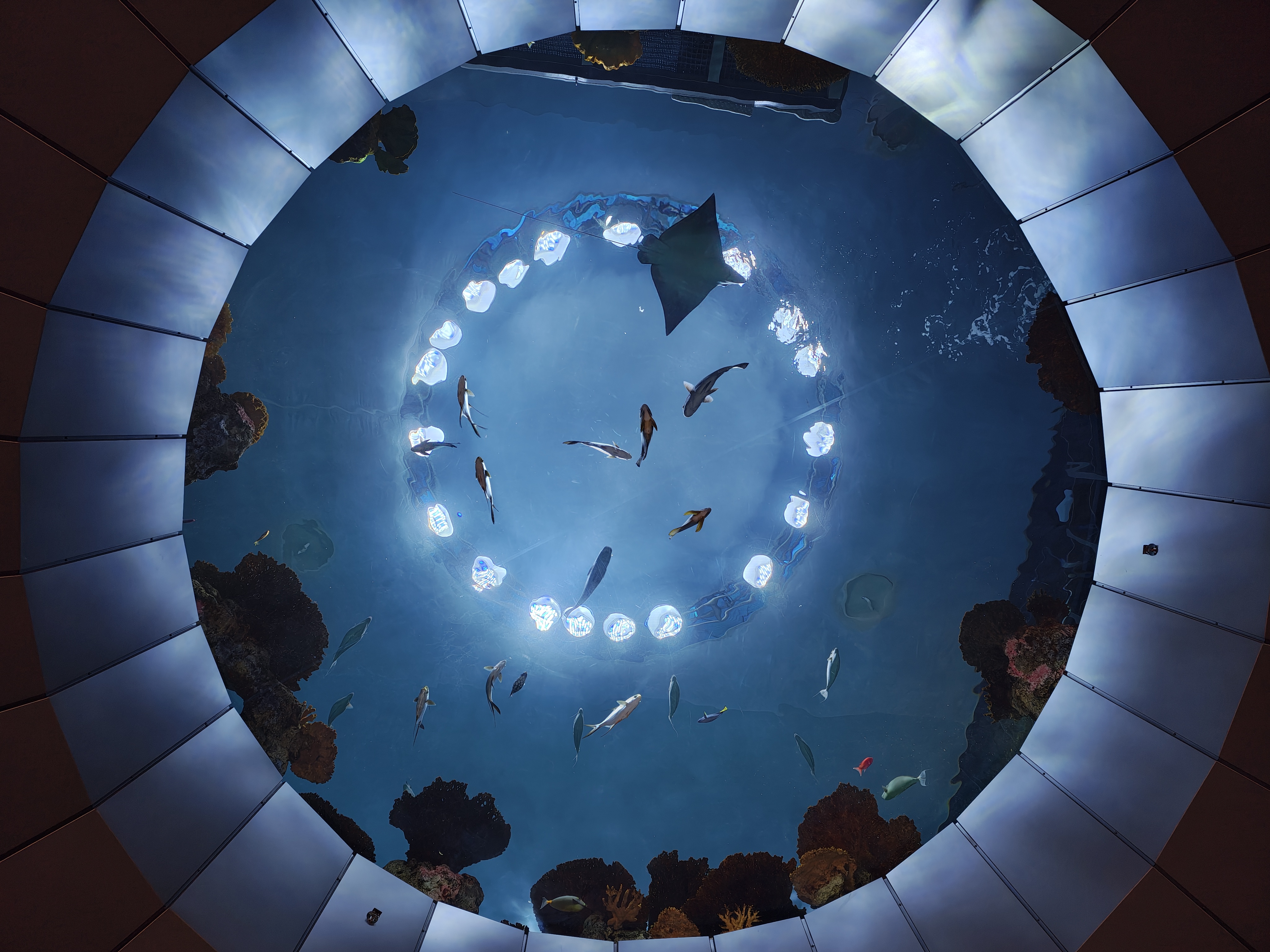


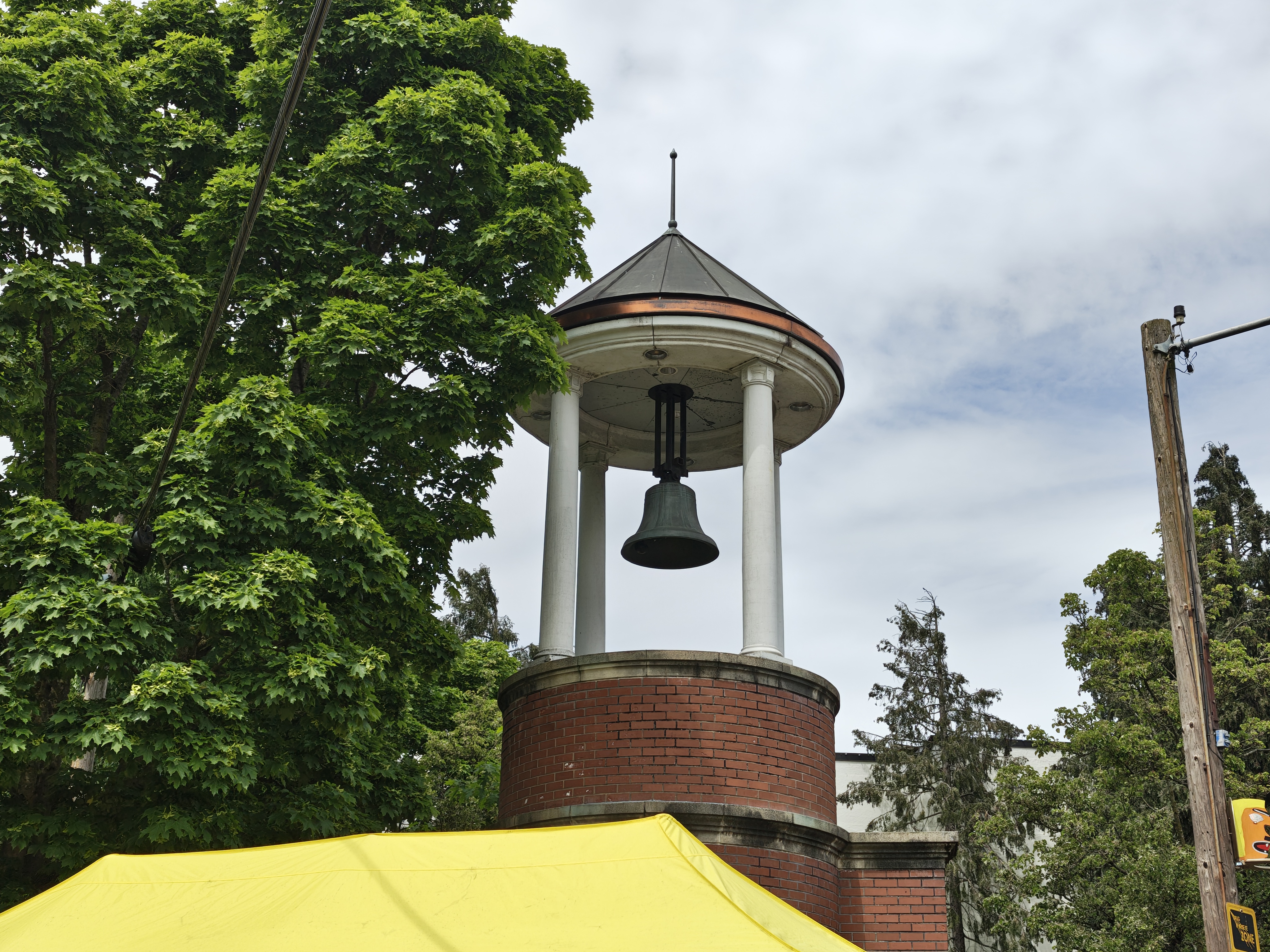
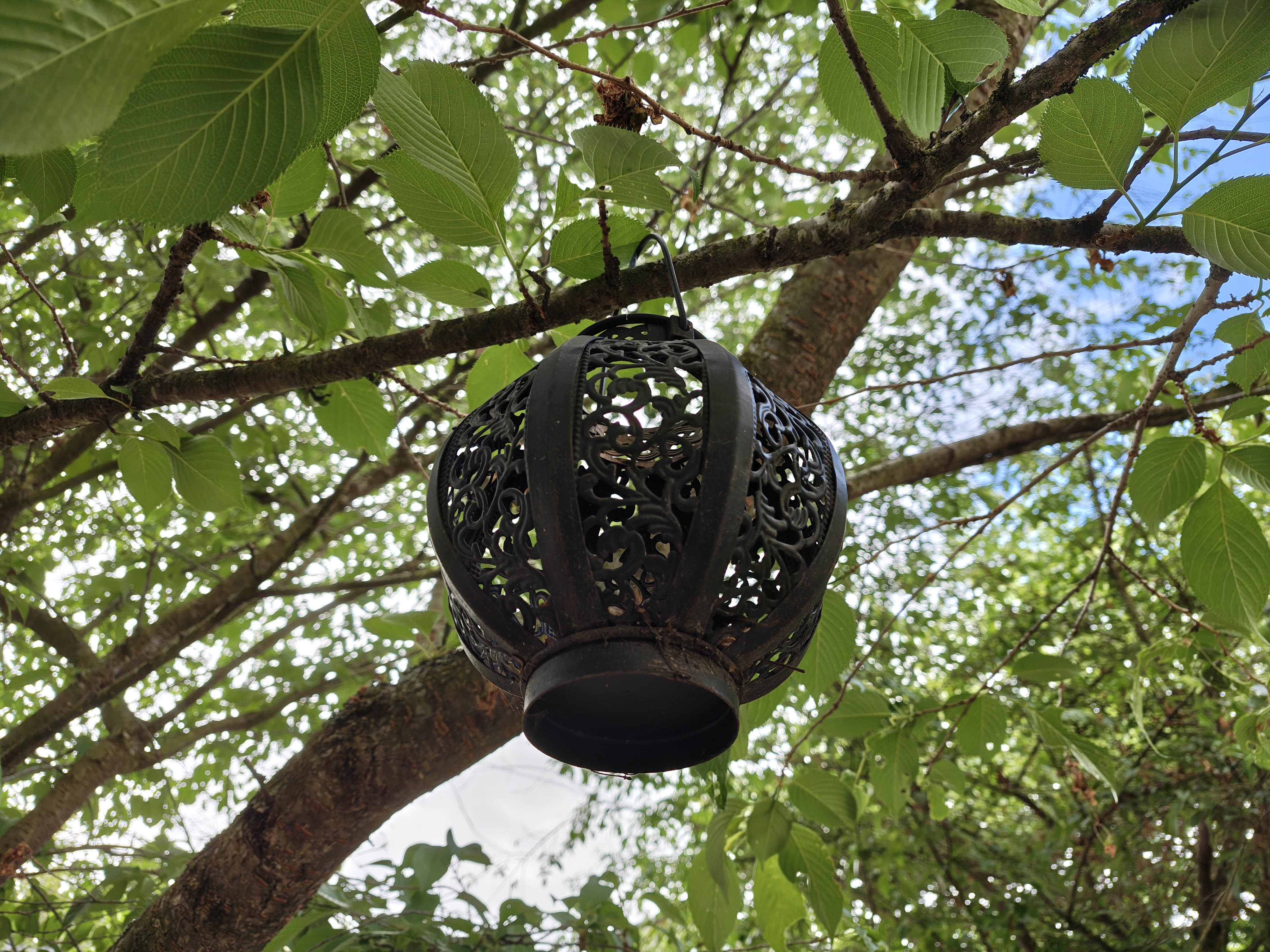
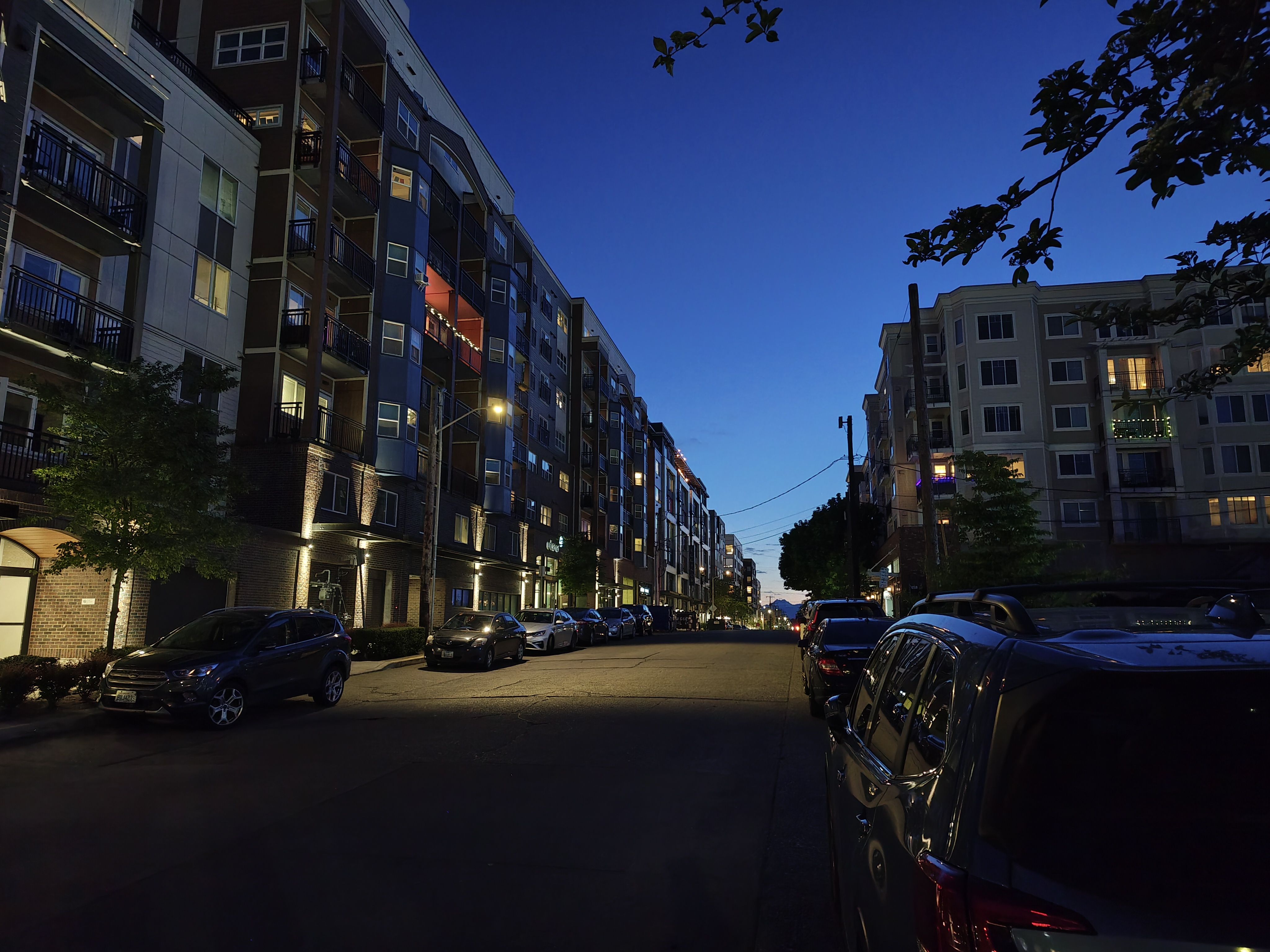
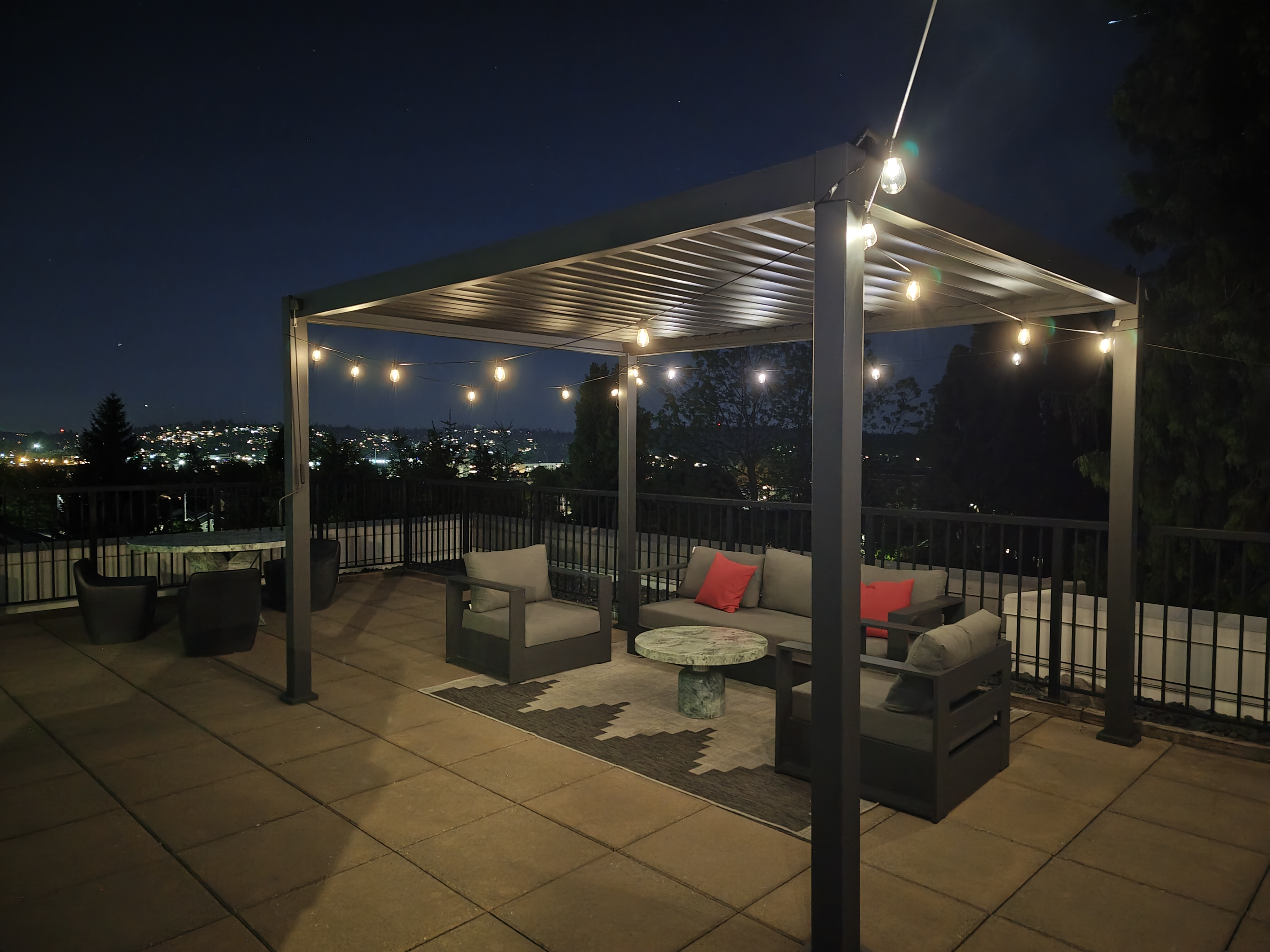
In the gallery below, you can see how the Razr Ultra images compare to last year's Razr Plus. I liked the camera on last year's model, but the Ultra takes things up a notch and images look much more interesting. That said, the Razr Plus does slightly better in low-light.



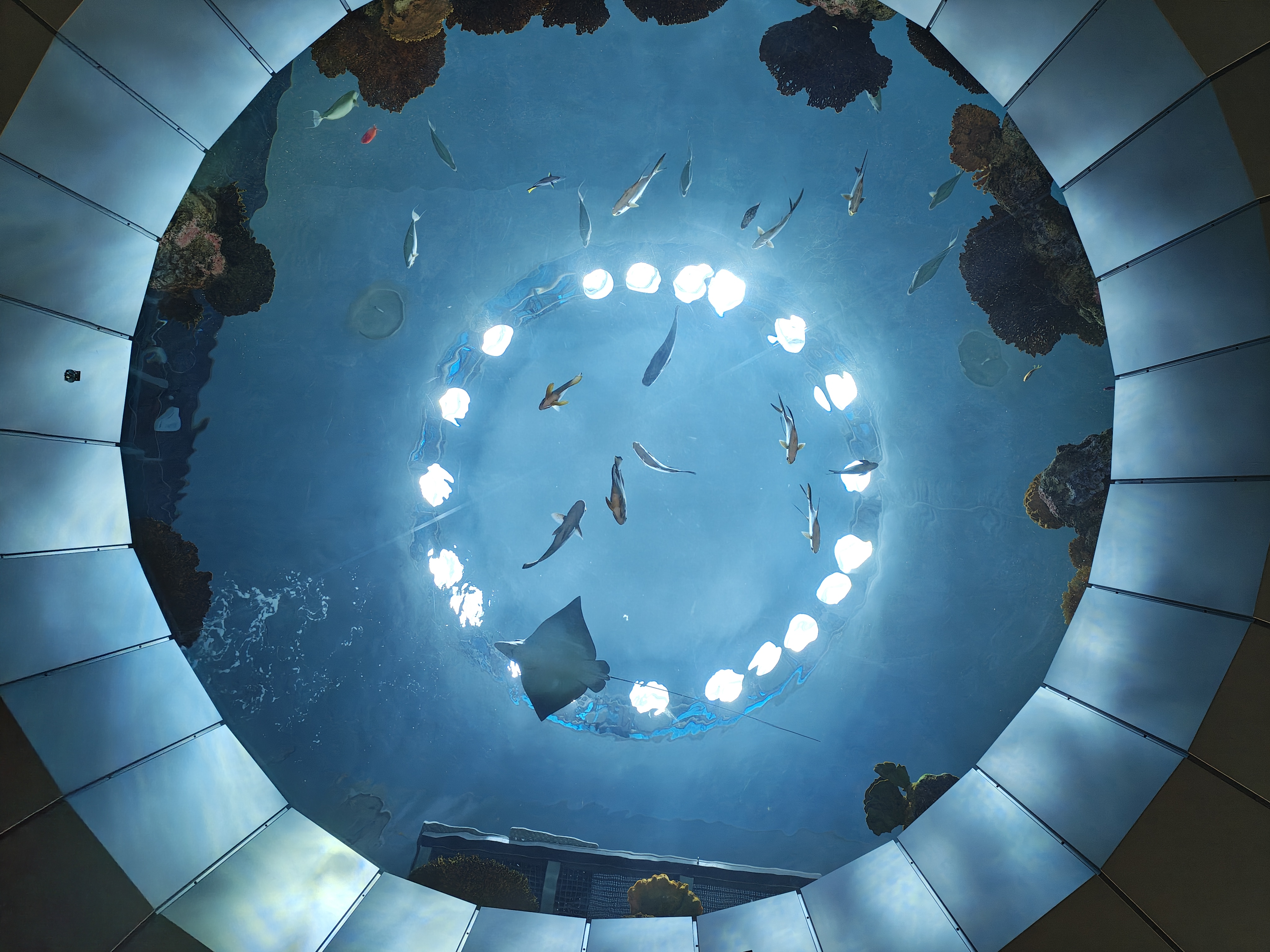



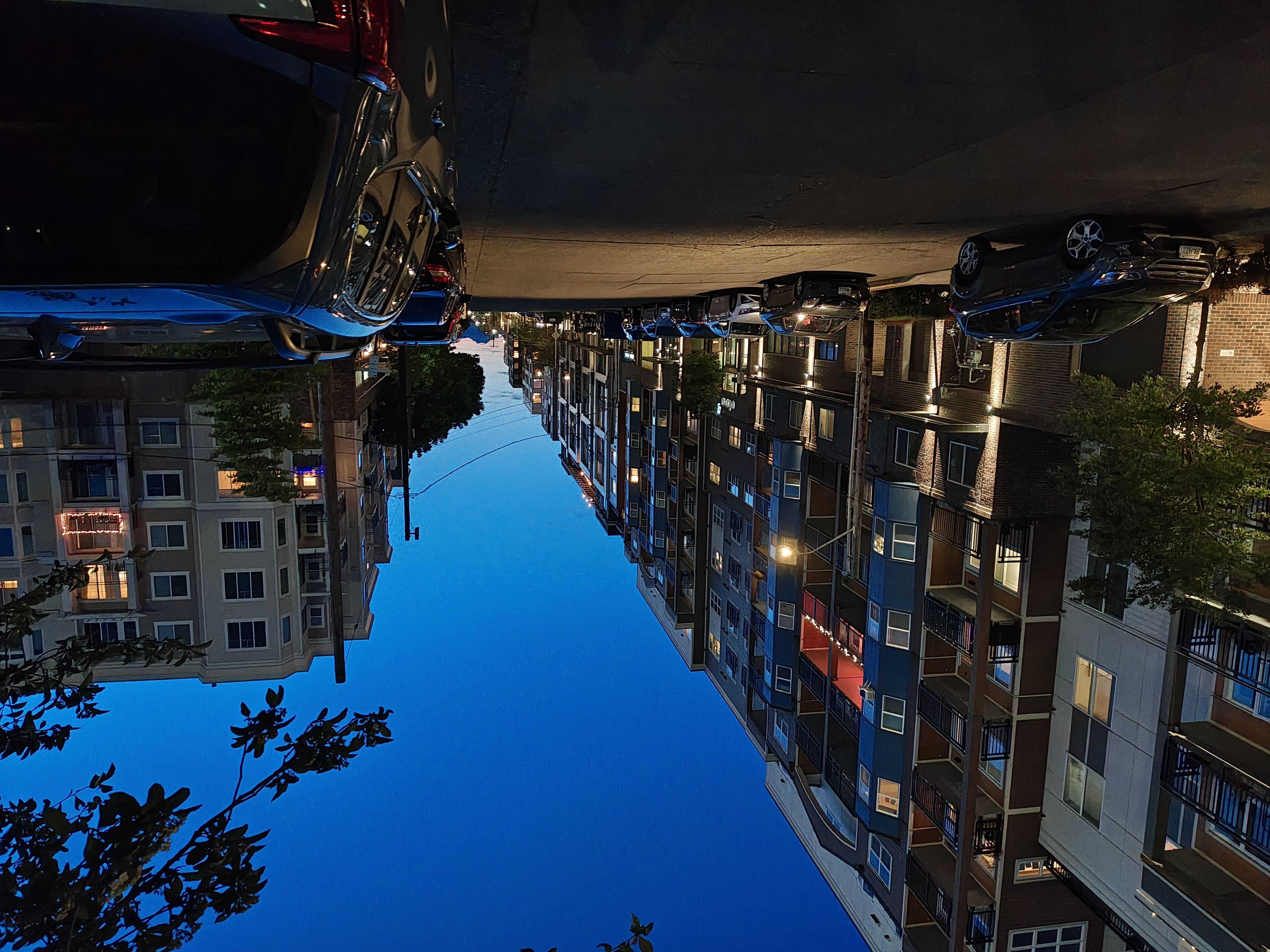




For a more in-depth look at the Razr Ultra 2025 camera and to see how it compares to other phones such as the Galaxy Z Flip 6, check out my Razr Ultra 2025 camera review.
Motorola also includes some AI tricks to help users customize how the camera handles colors based on the subject, which is a neat way to personalize the camera experience. That includes Action Shot for fast-moving subjects, Group Shot, which is Motorola's version of Best Take, and the new Air gestures for controlling video capture without touching the phone.
Video capture also takes advantage of better color reproduction and overall more stable recording, even at 4K60 or 8K30. You can capture video in Dolby Vision for an even greater boost, or use Camcorder mode for improved handling.
Motorola Razr Ultra 2025: Competition
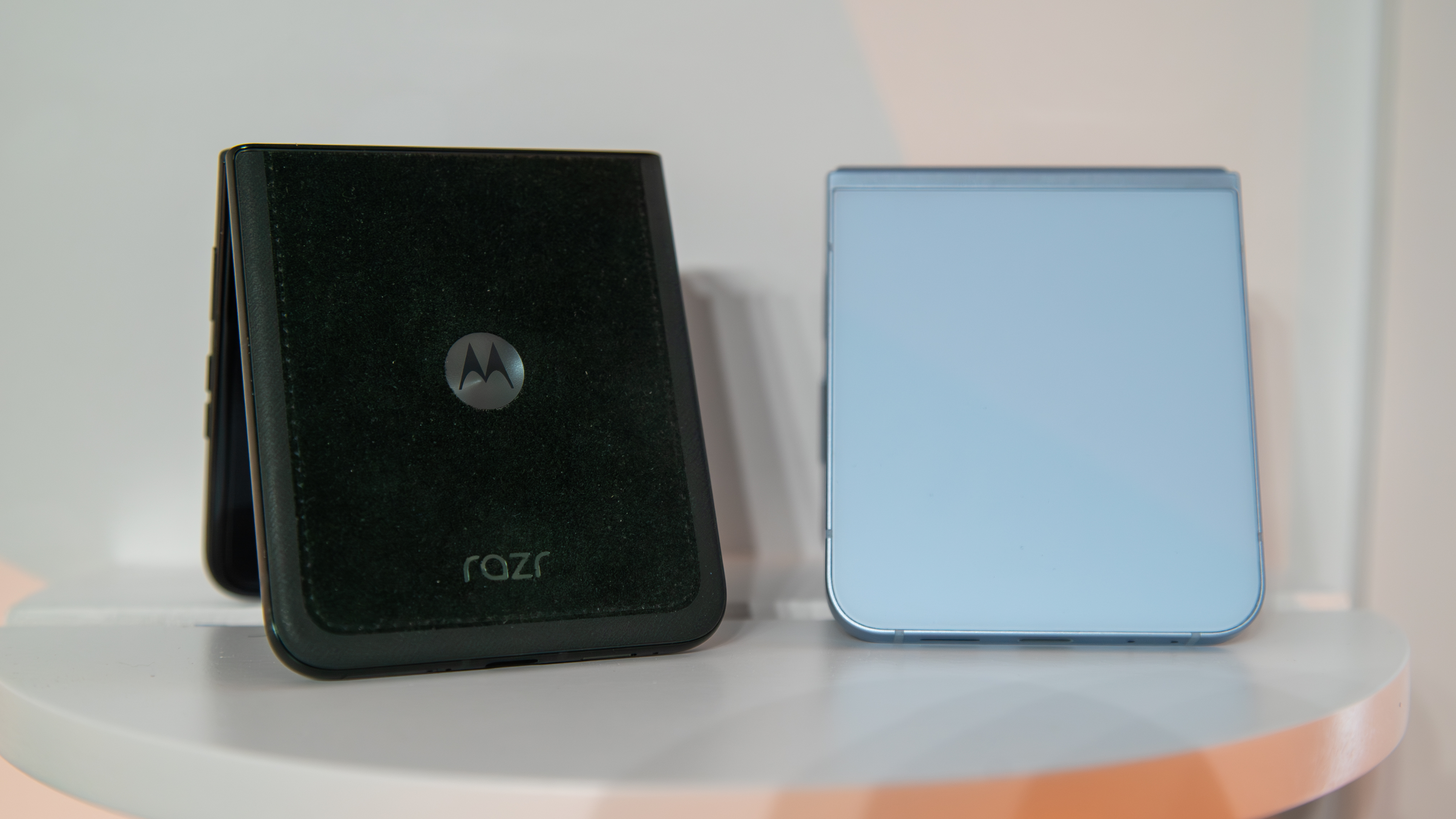
In North America, the Ultra's only notable competitor at the time of writing is the Galaxy Z Flip 6. It's a great phone overall, thanks to its powerful Snapdragon chipset, excellent battery life, solid camera setup, and long software support. Even with last year's chip, performance should hold up fairly well, although the cover screen experience falls short, and charging speeds are noticeably slower.
In a way, the Galaxy S25 Ultra is also a direct competitor, as the Razr Ultra specs and price more closely match Samsung's best. It gets a slightly beefier Snapdragon chip, more camera lenses, and a more robust software offering. However, color options aren't as interesting, it has less RAM, and it charges much more slowly. For more, check out our Razr Ultra 2025 vs. Galaxy S25 Ultra comparison.
Motorola Razr Ultra 2025: Should you buy it?

You should buy this if...
- You want a powerful flagship Android phone with plenty of AI experiences.
- You want a versatile camera with a large cover screen viewfinder.
- You want good battery life, fast charging, and a very useful cover screen.
You shouldn’t buy this if…
- You want a long and reliable software update promise.
- You want a dedicated telephoto camera for enhanced zoom.
- You don’t want to spend more than $999 for a smartphone (it may be worth waiting).
Motorola may thrive in the midrange with phones like the Moto G Stylus 2025, but the company is clearly feeling itself with the Razr. The Razr Ultra 2025 represents the absolute best of Motorola, from its iconic design to its impressive specs and a fun suite of AI features.
The partnership with Pantone is clearly paying off, as evident by the display and camera improvements, while the Snapdragon 8 Elite gives the Razr a new edge as a premium Android smartphone.
Of course, the price tag may be hard for some to justify, and the update promise could be better if you don’t plan on upgrading in the next three or four years. However, I feel that the positives easily outweigh the negatives, and the Razr Ultra 2025 is one of the best foldables, if not one of the best phones of 2025.

The ultimate flip phone
The Motorola Razr Ultra 2025 represents the best a flip phone can offer, thanks to the powerful Snapdragon 8 Elite, a great set of cameras, and a suite of fun and useful AI features.

Derrek is the managing editor of Android Central, helping to guide the site's editorial content and direction to reach and resonate with readers, old and new, who are just as passionate about tech as we are. He's been obsessed with mobile technology since he was 12, when he discovered the Nokia N90, and his love of flip phones and new form factors continues to this day. As a fitness enthusiast, he has always been curious about the intersection of tech and fitness. When he's not working, he's probably working out.
You must confirm your public display name before commenting
Please logout and then login again, you will then be prompted to enter your display name.
